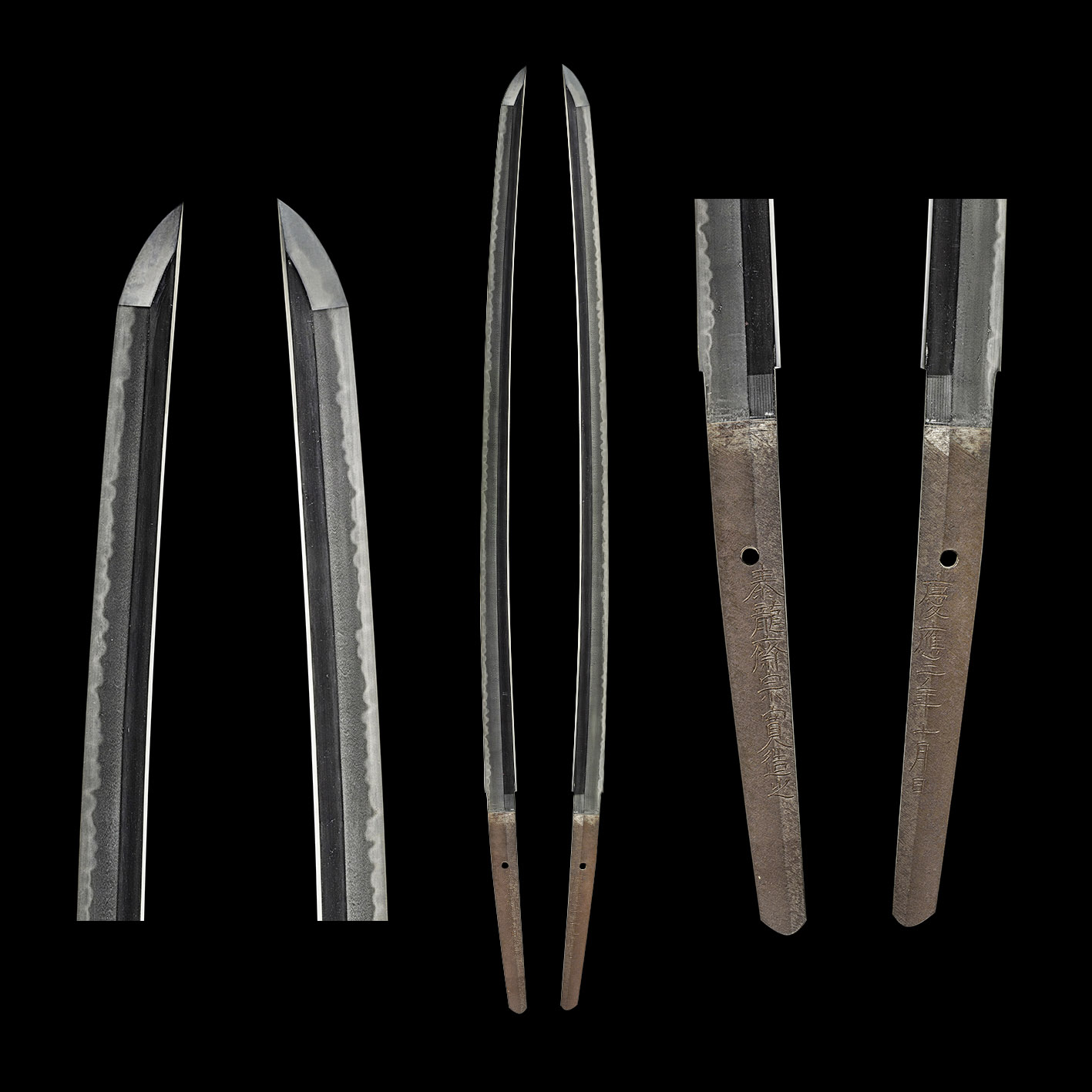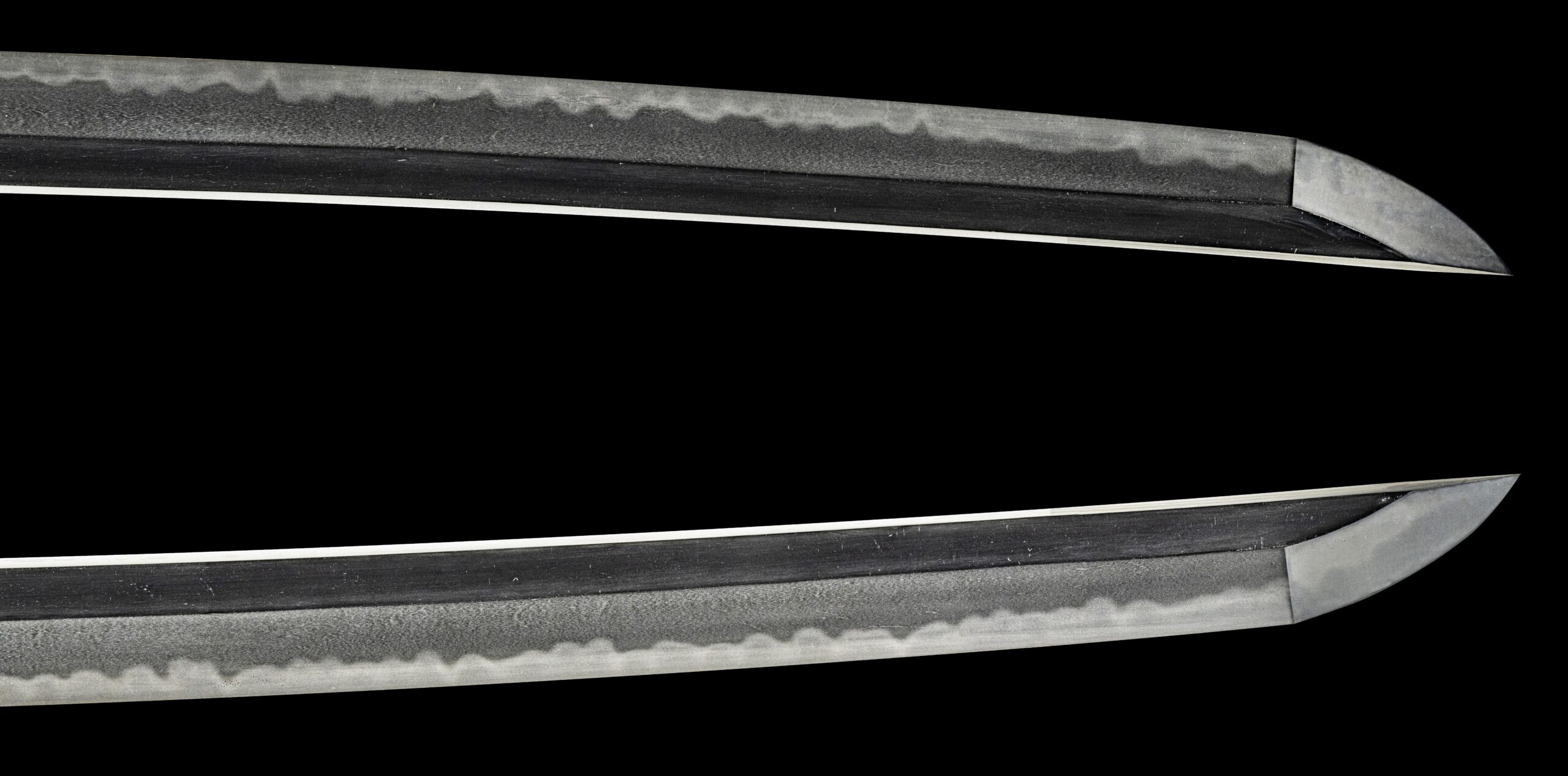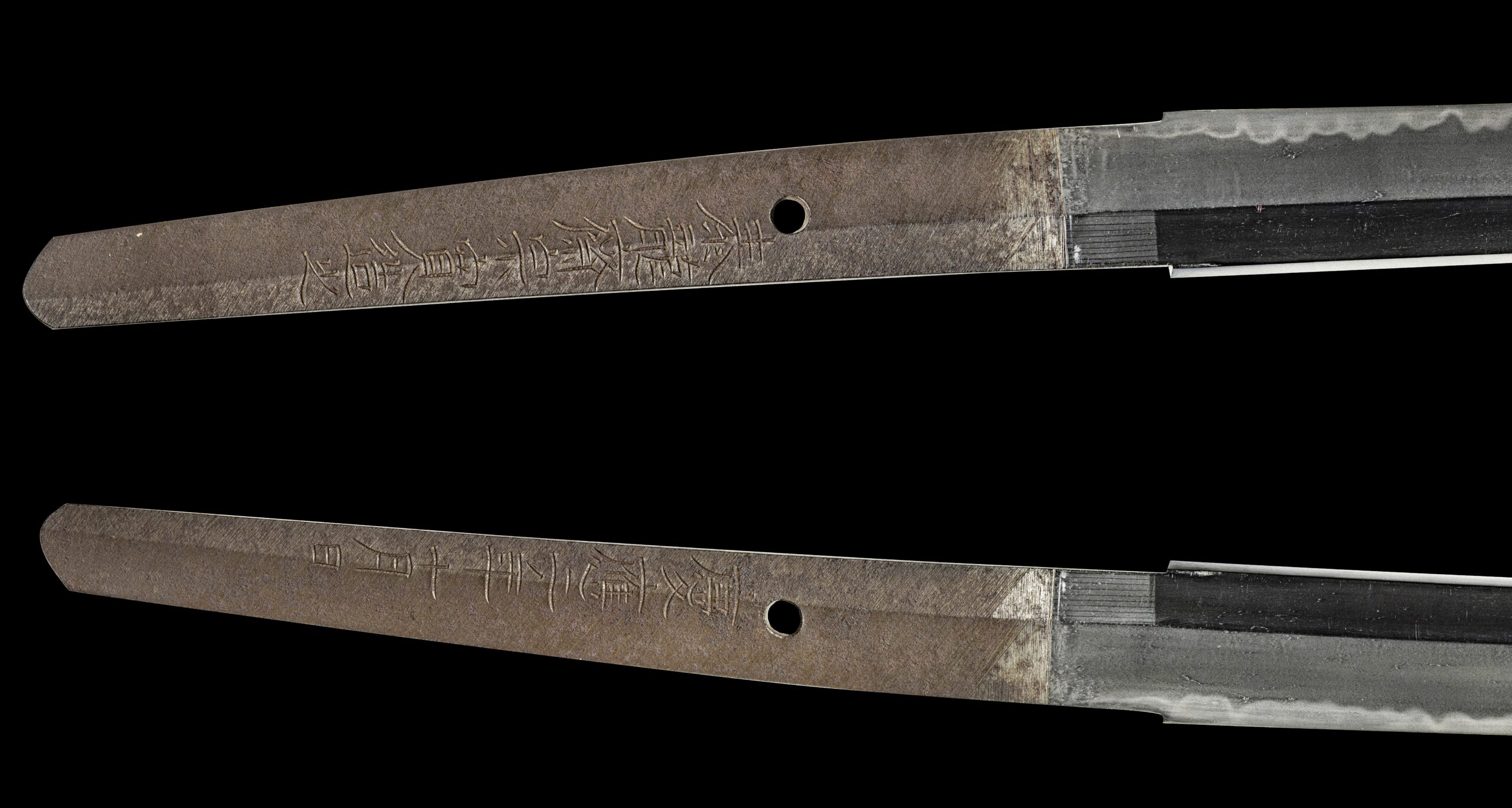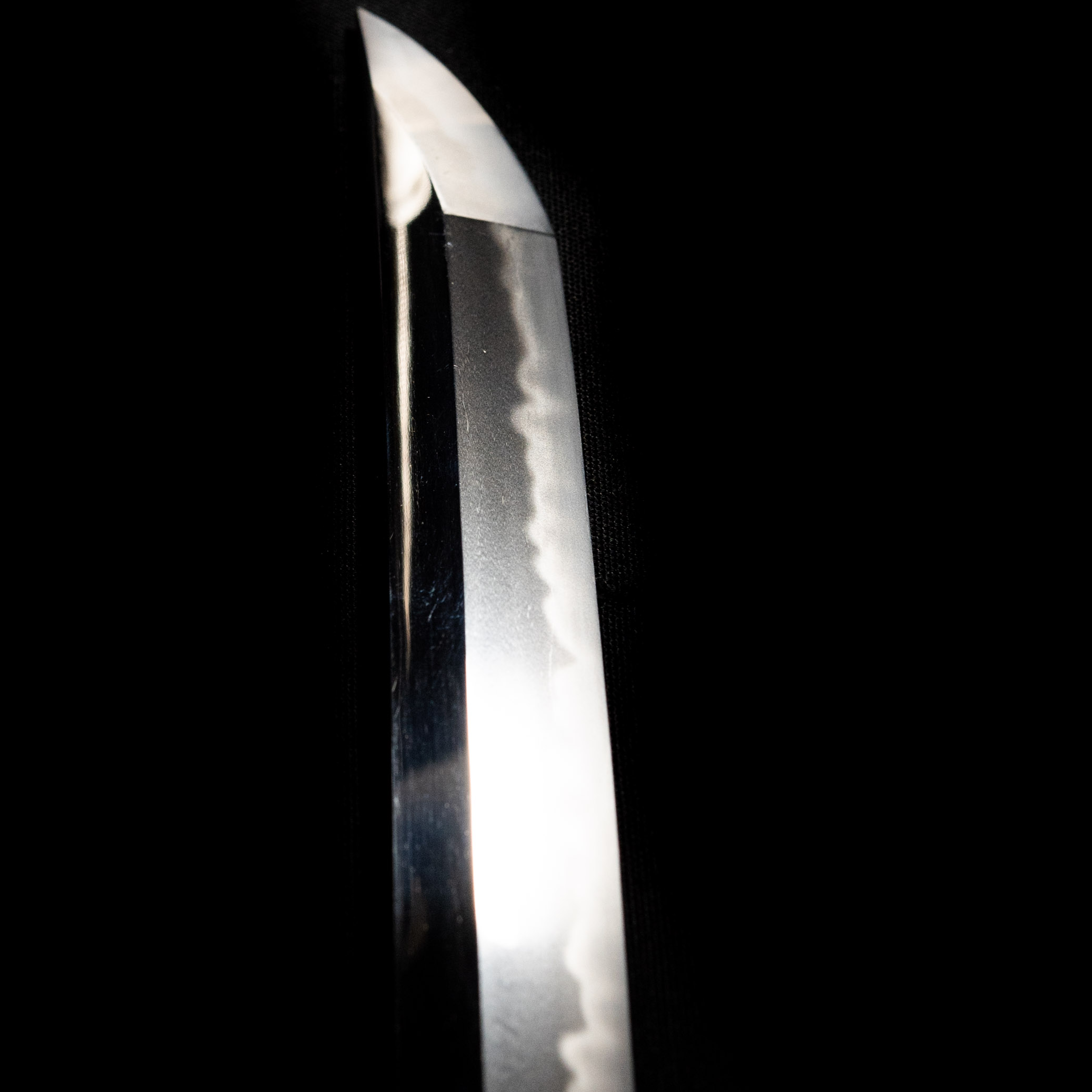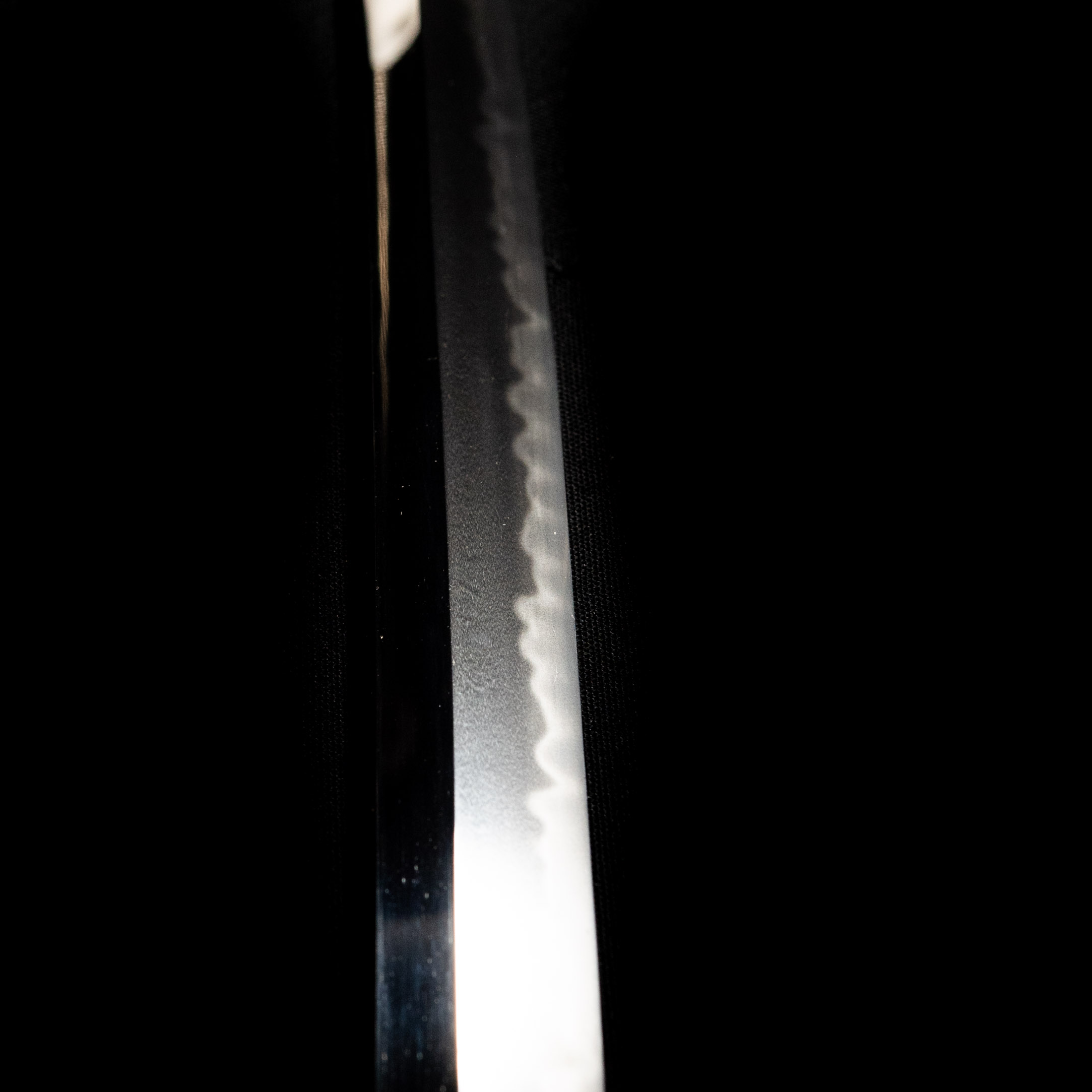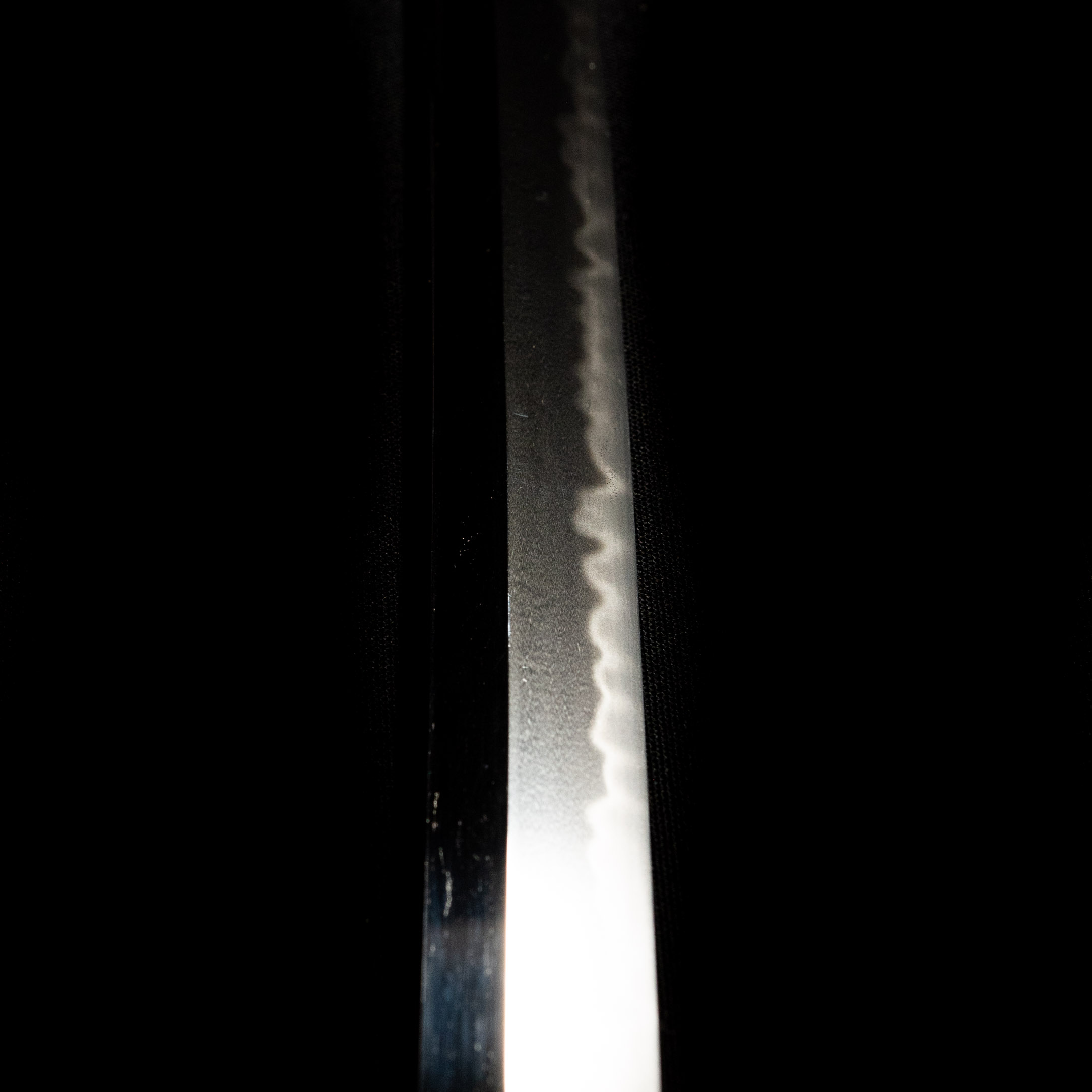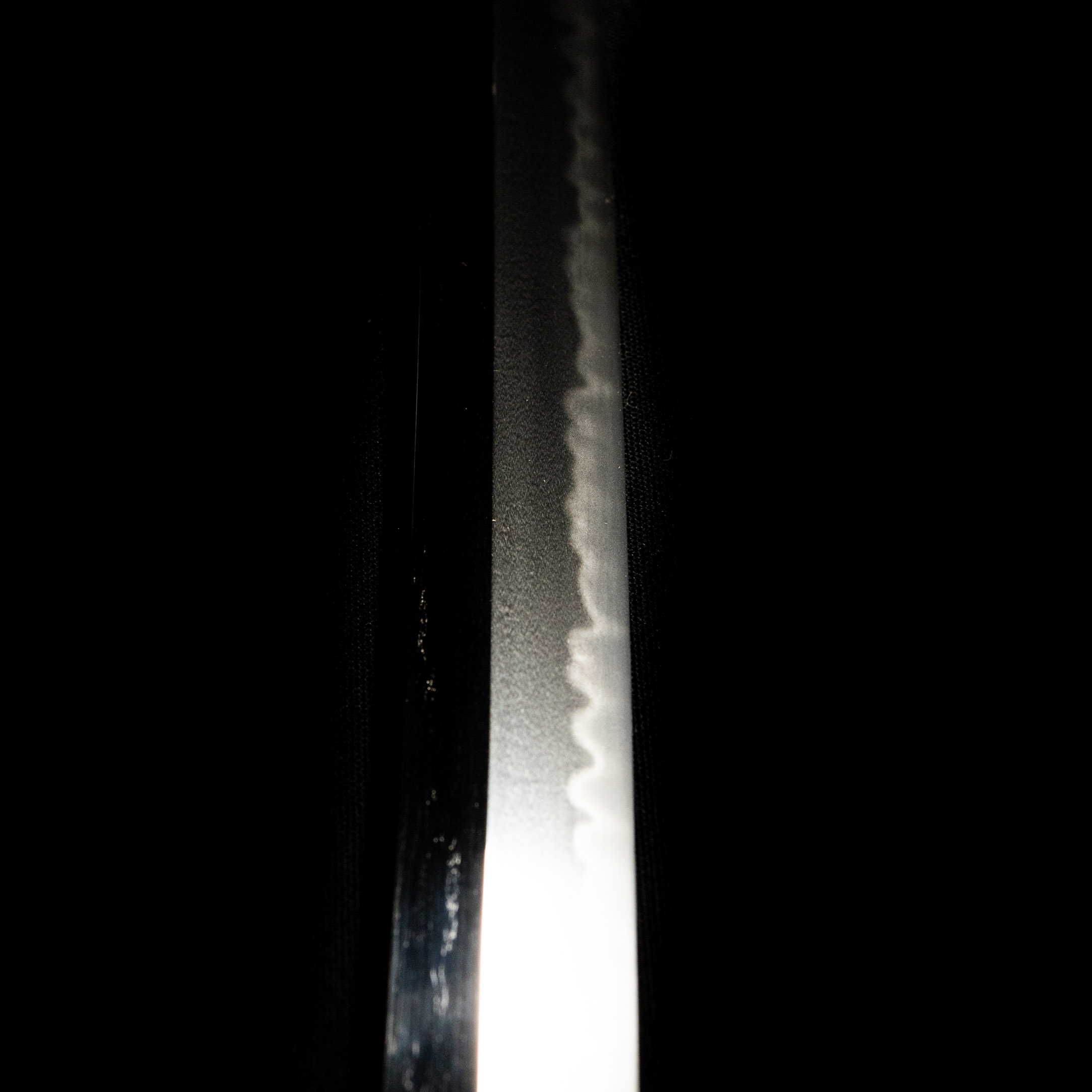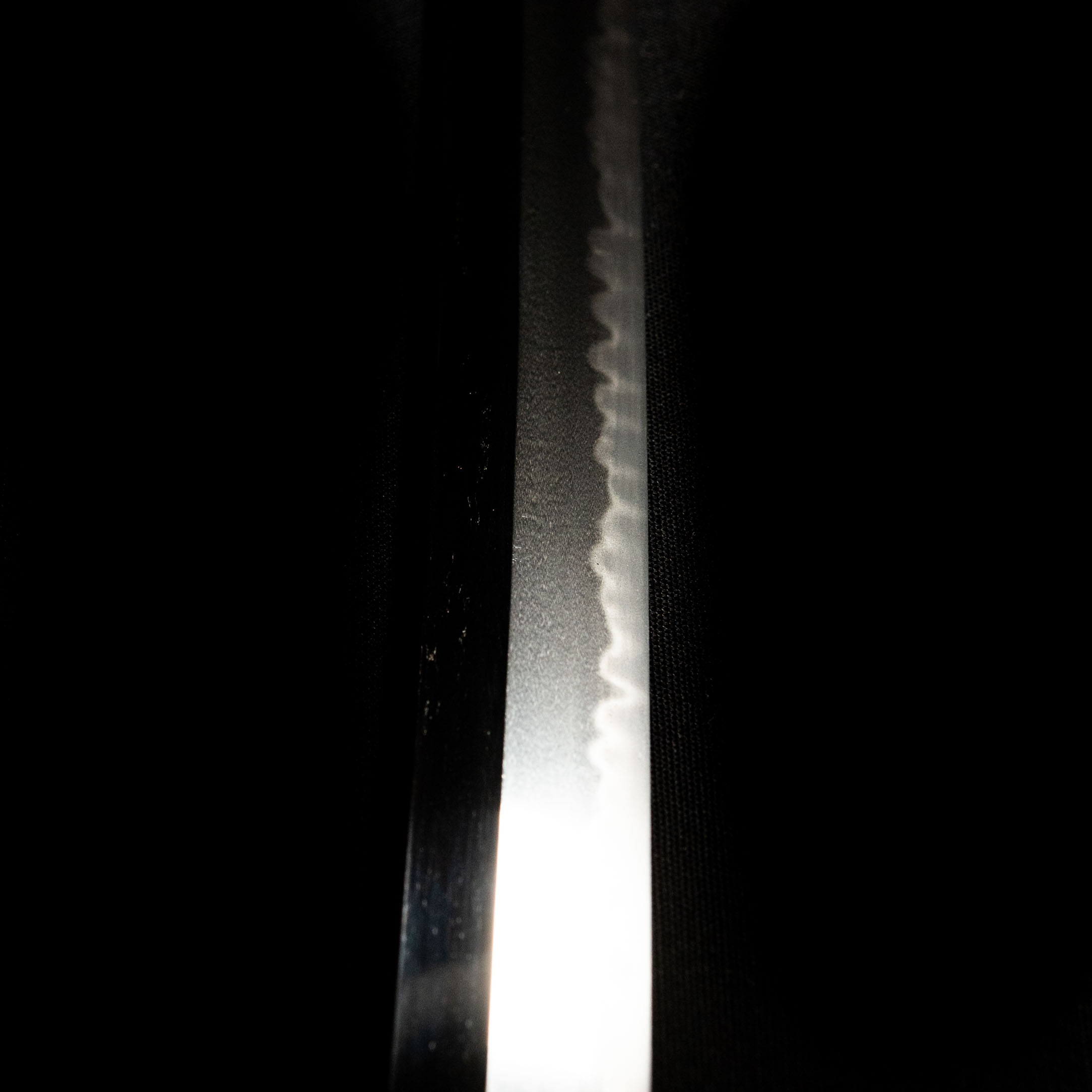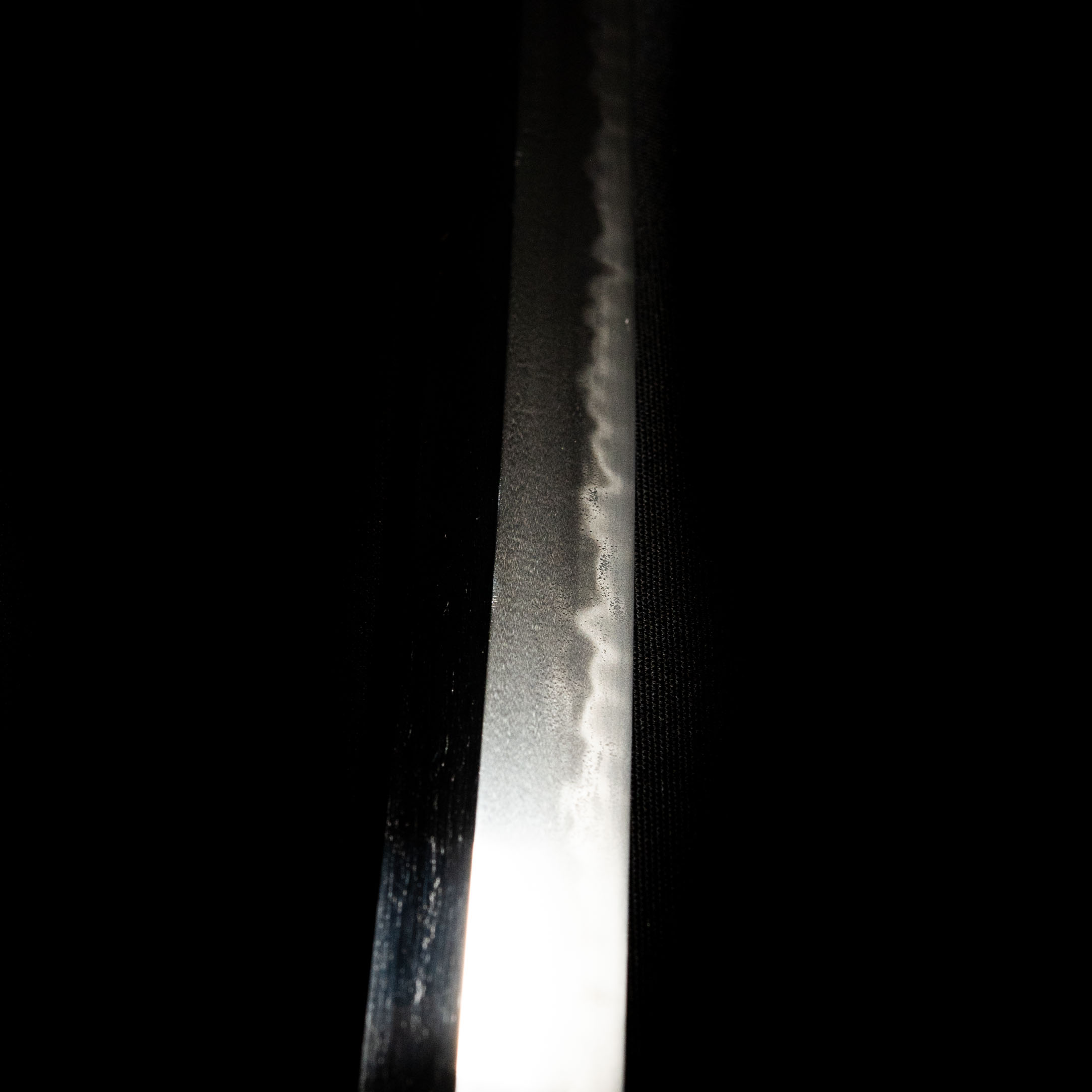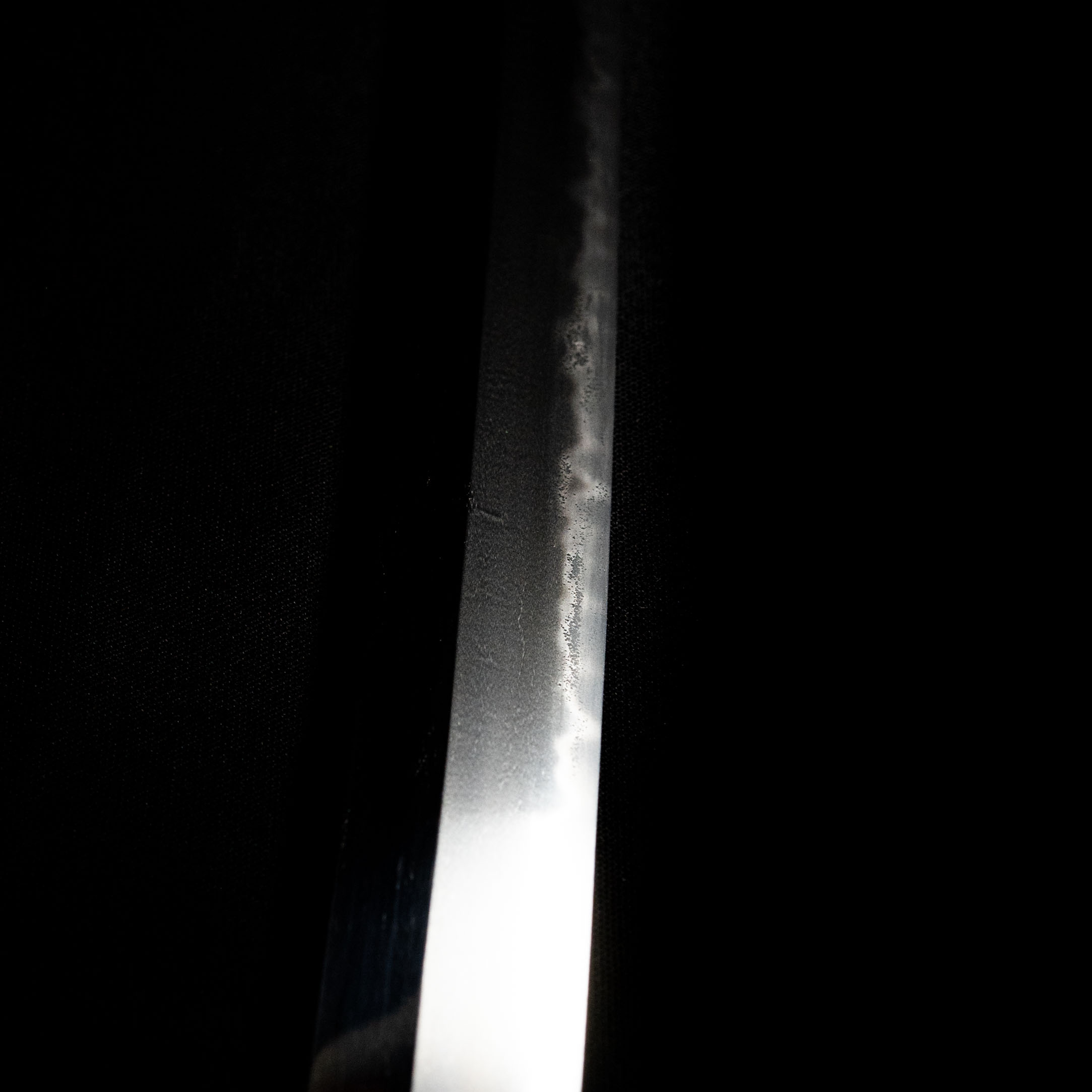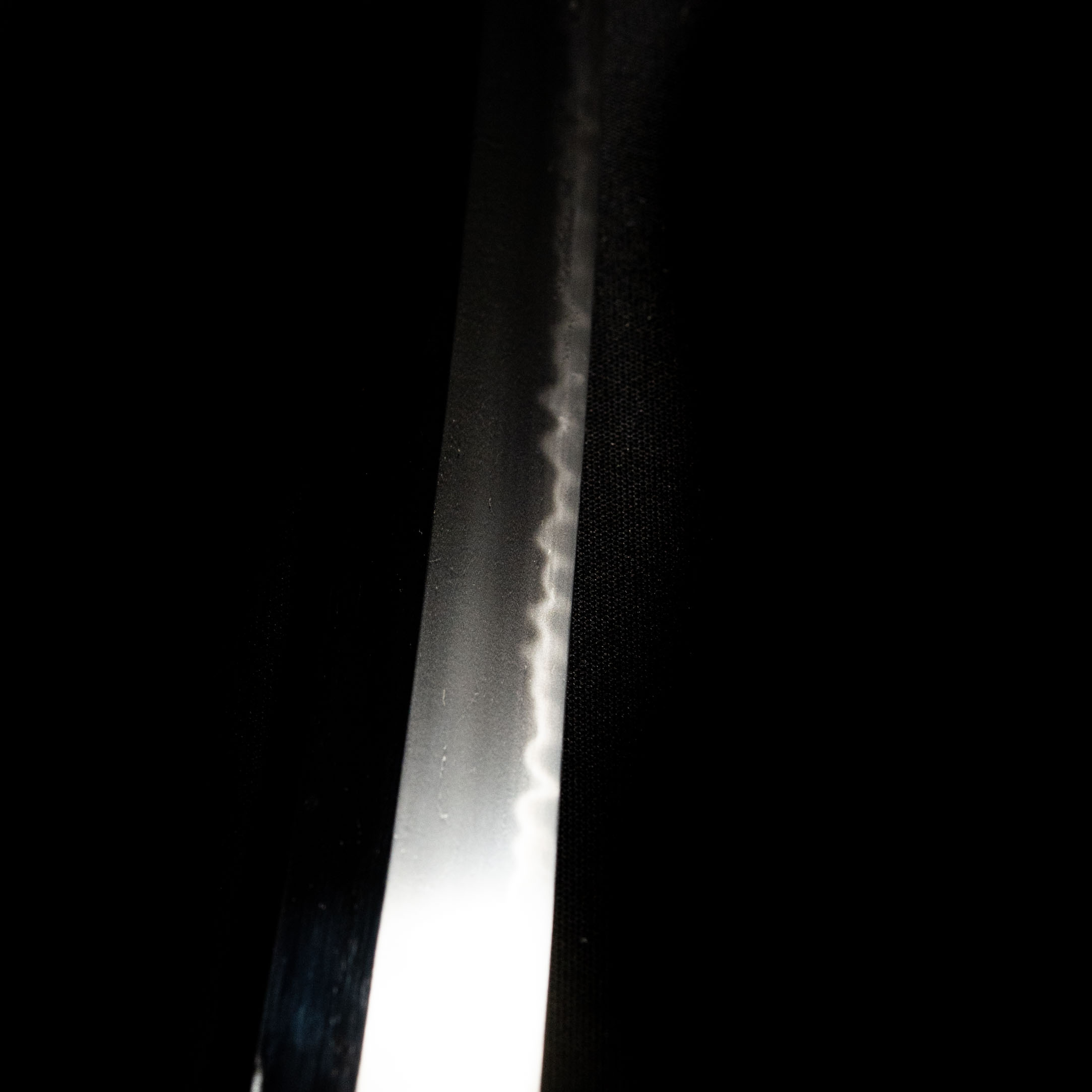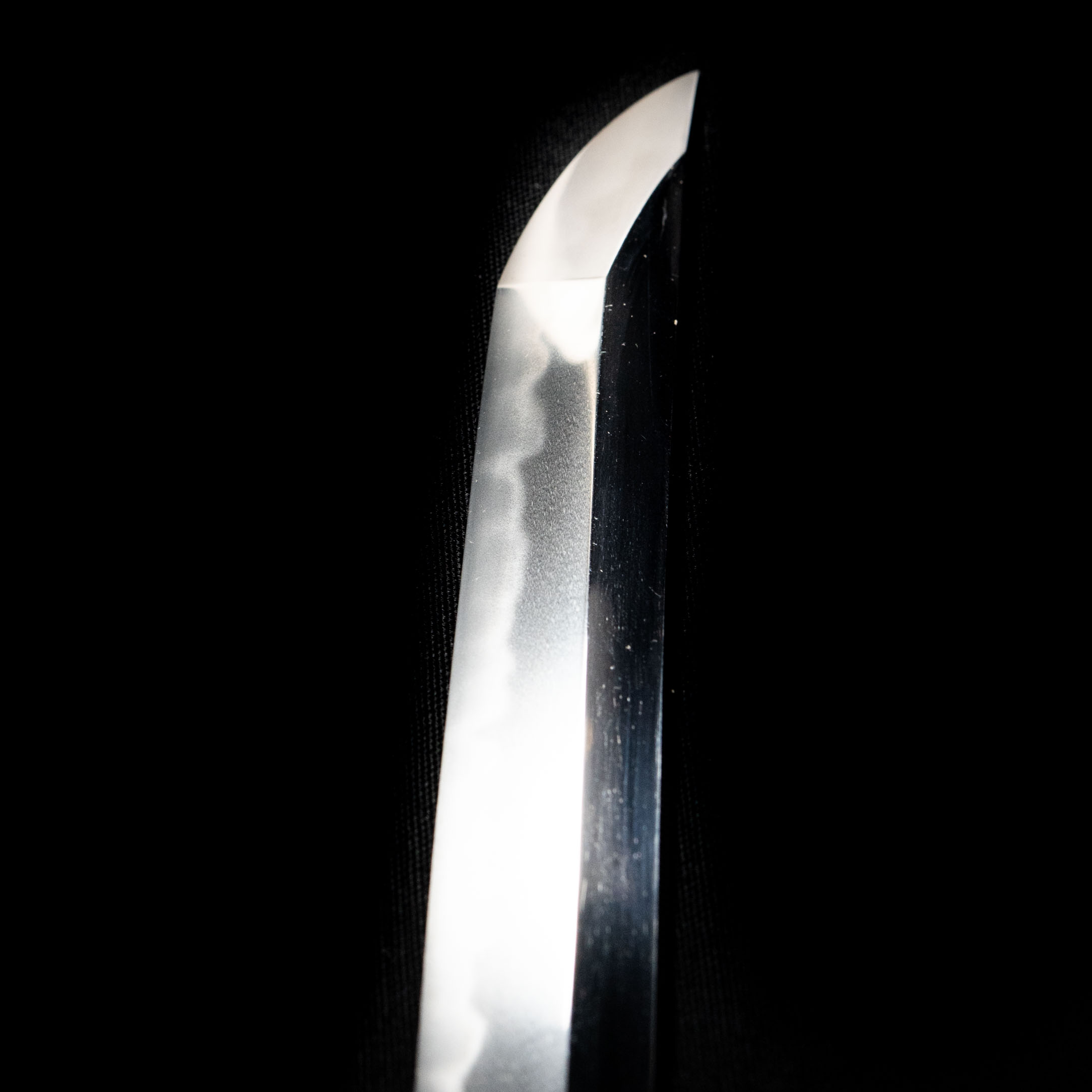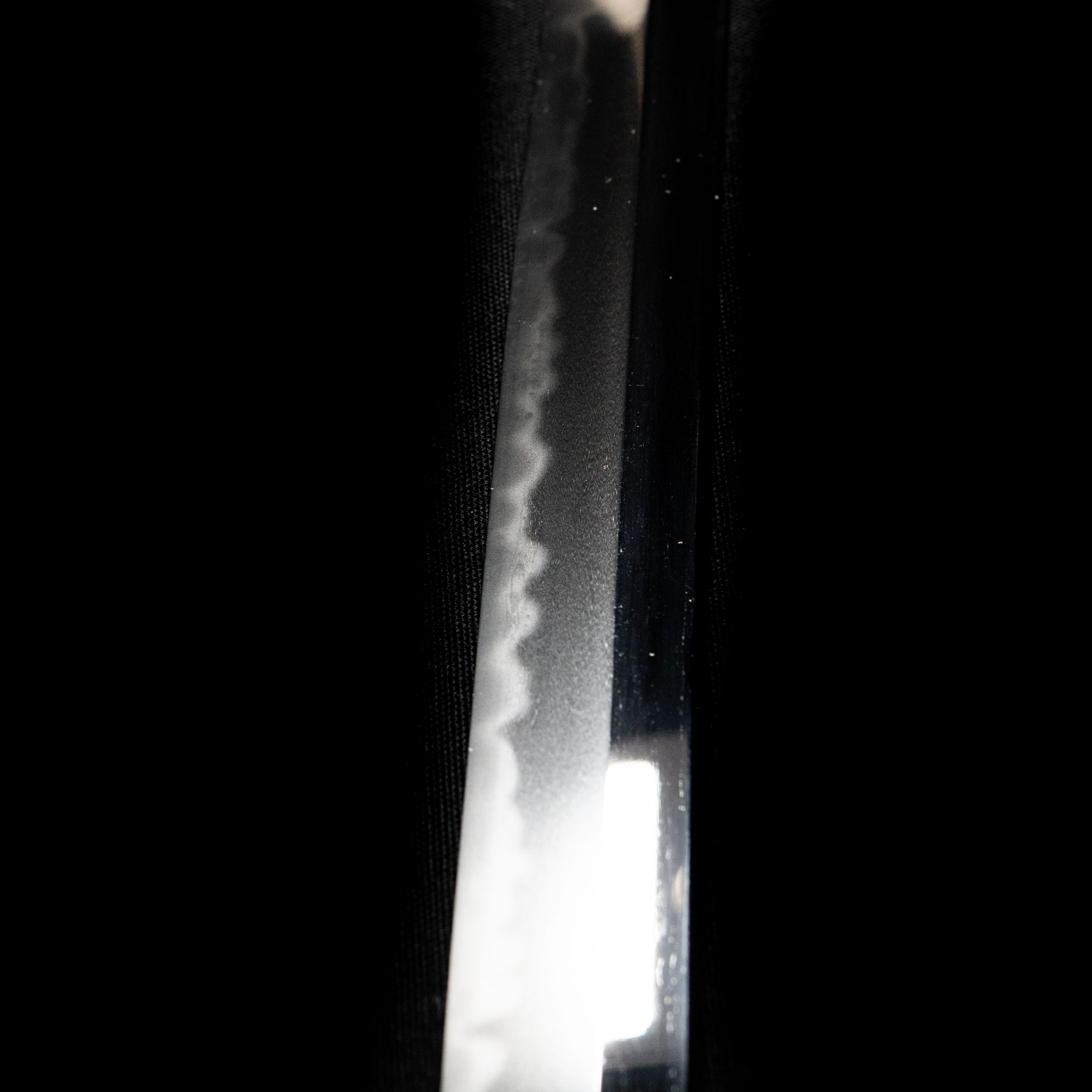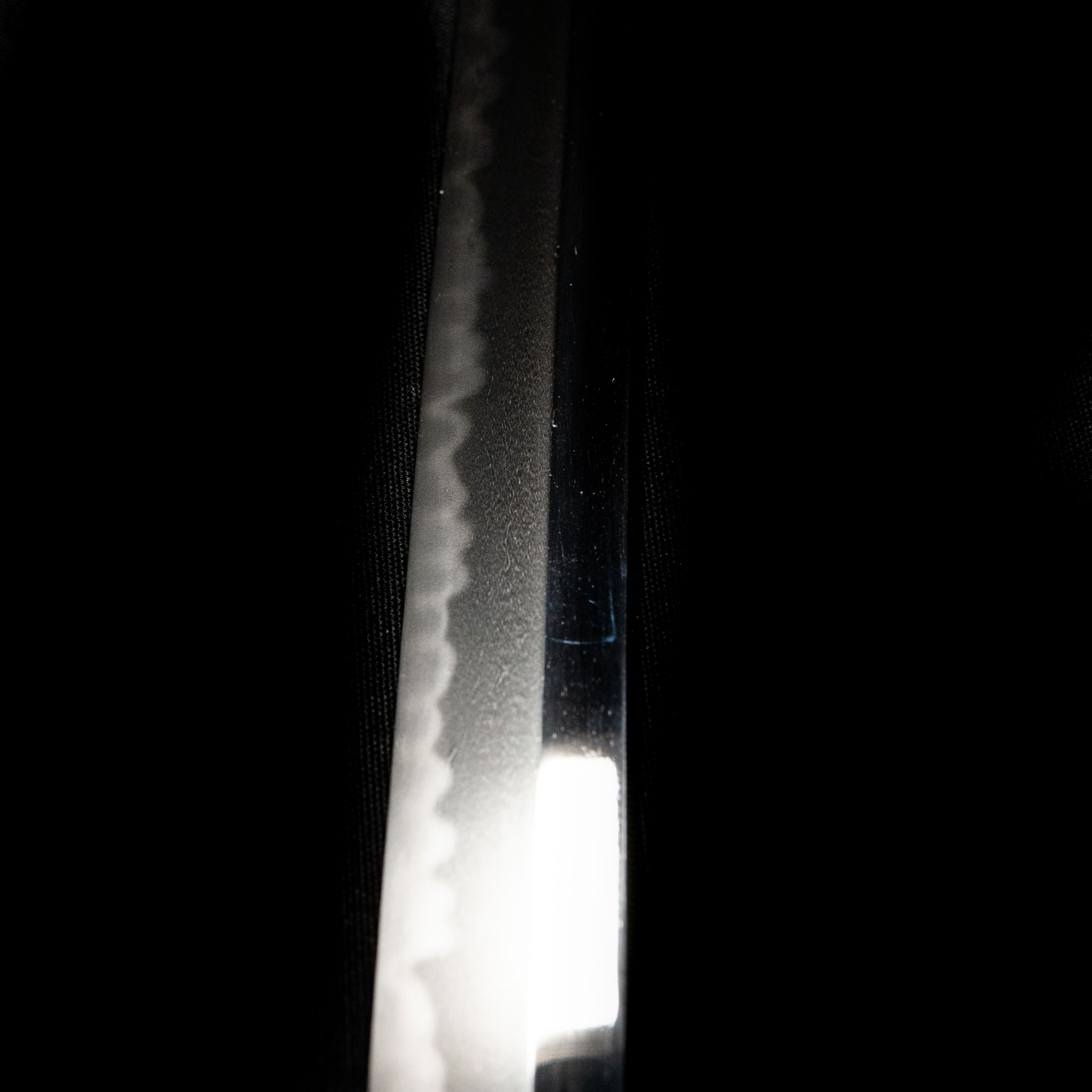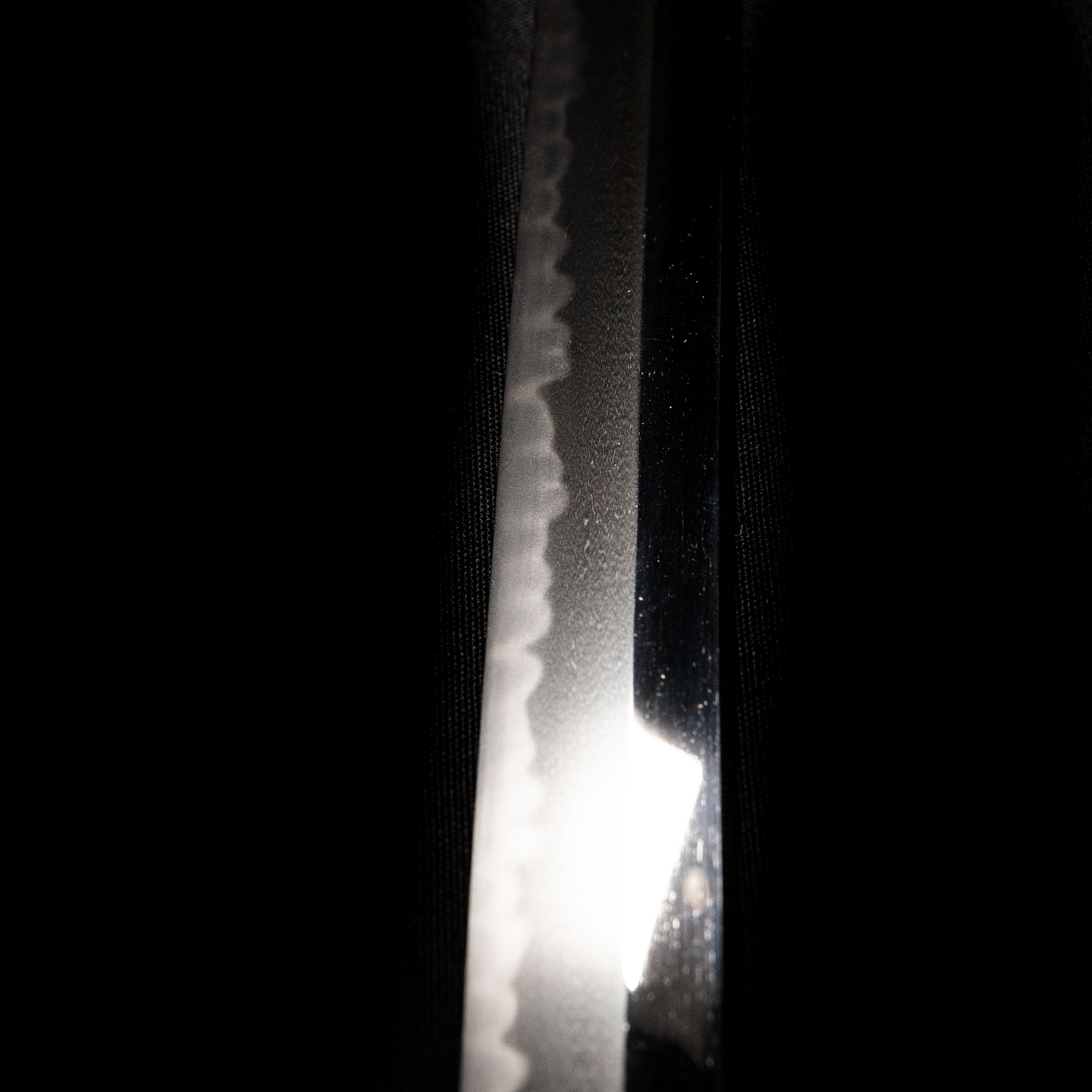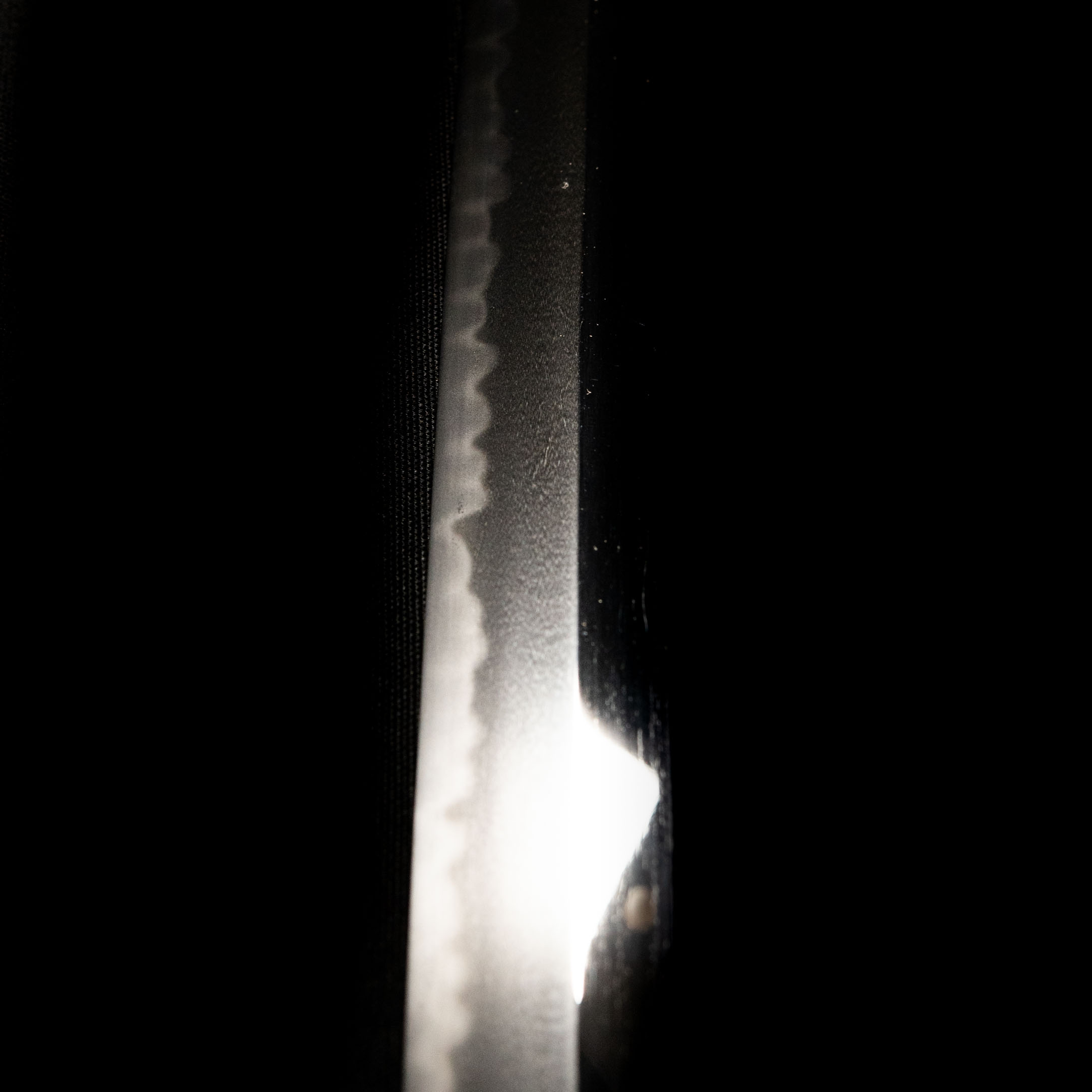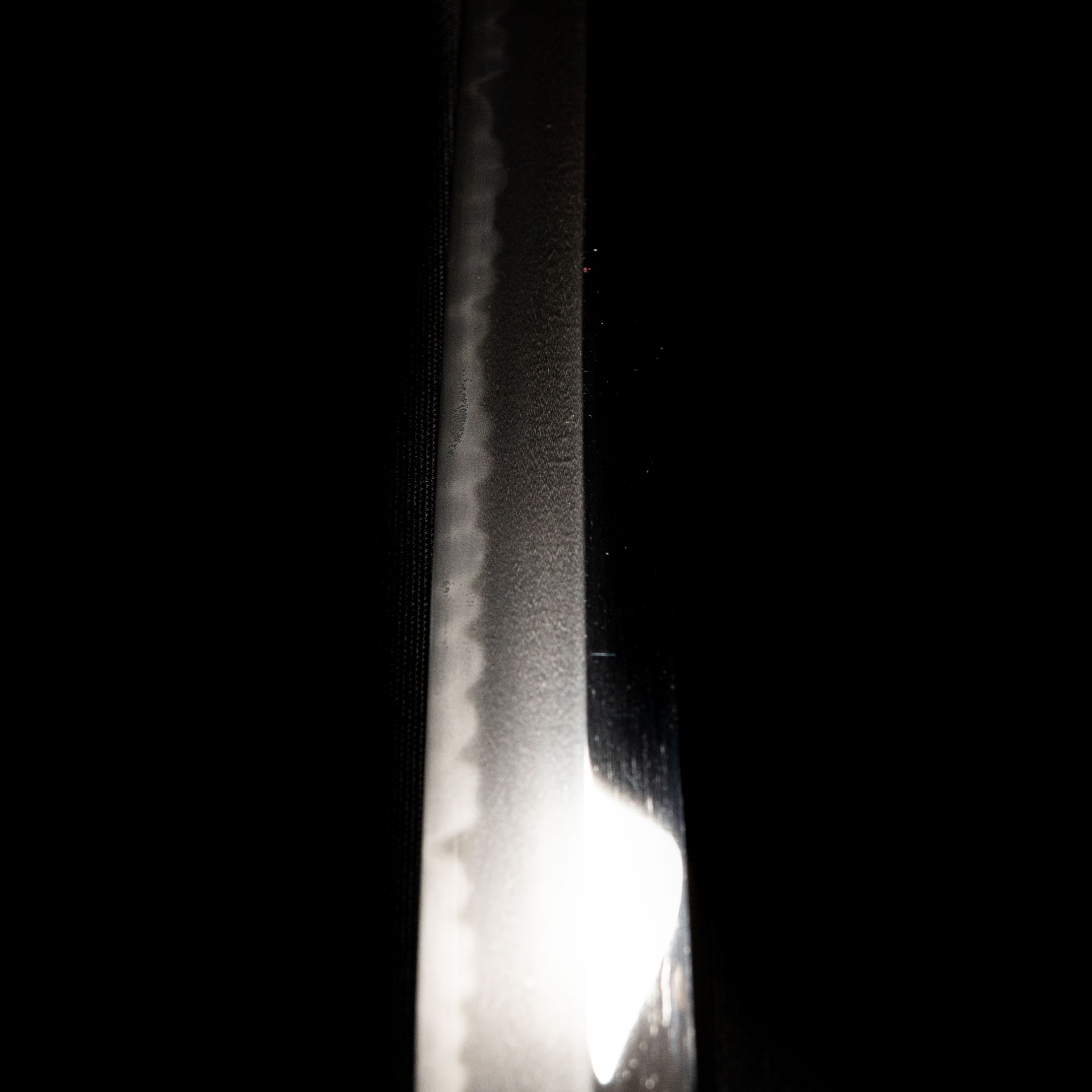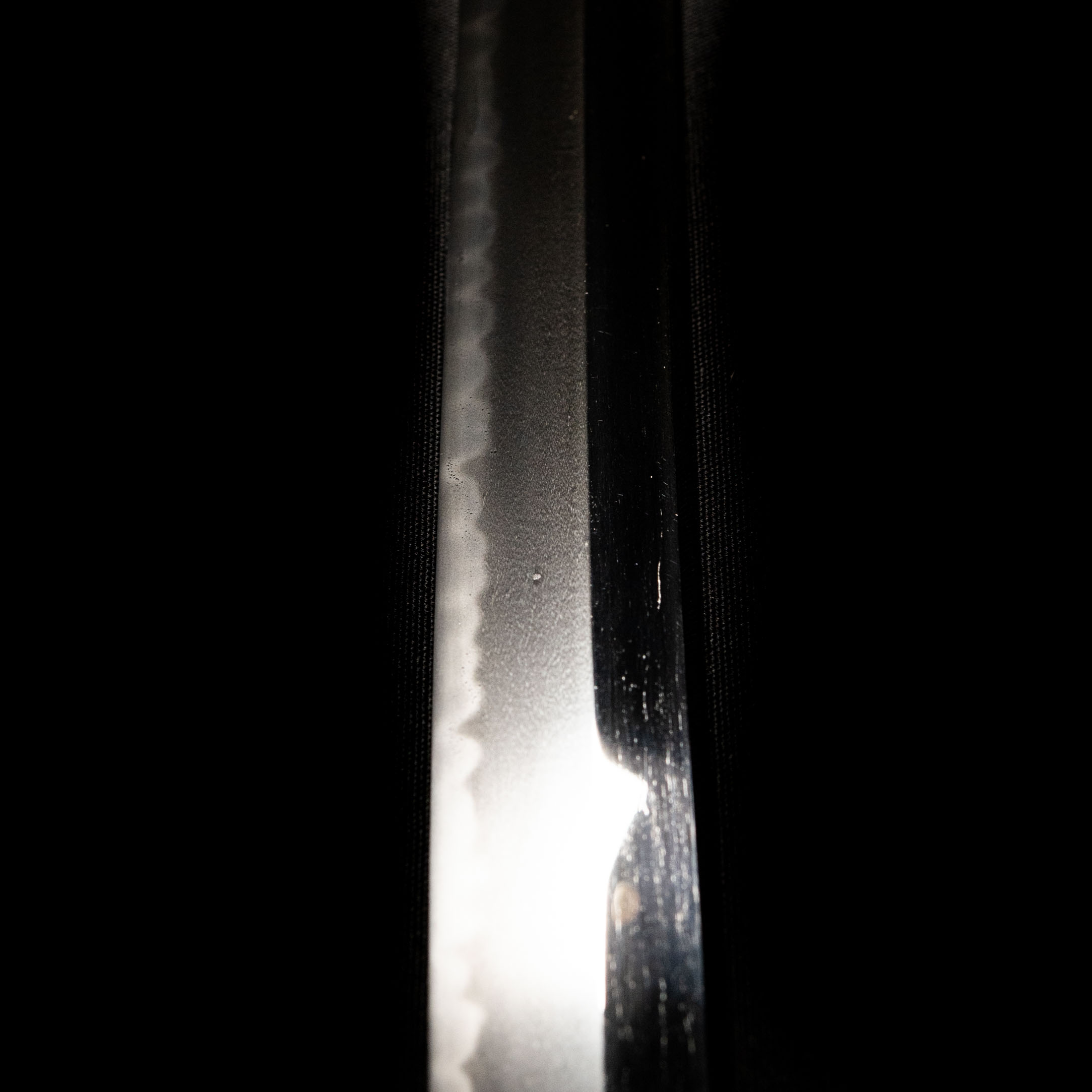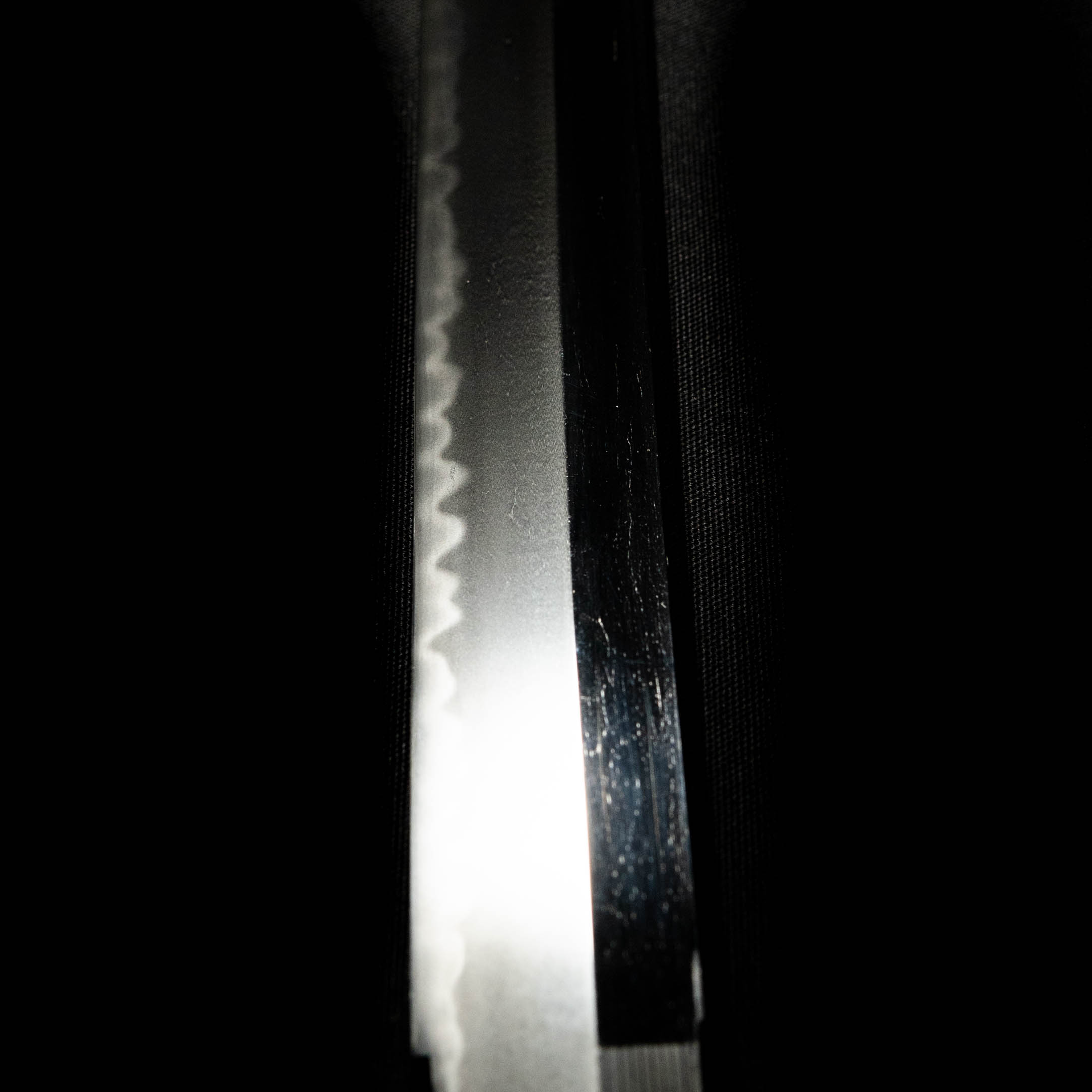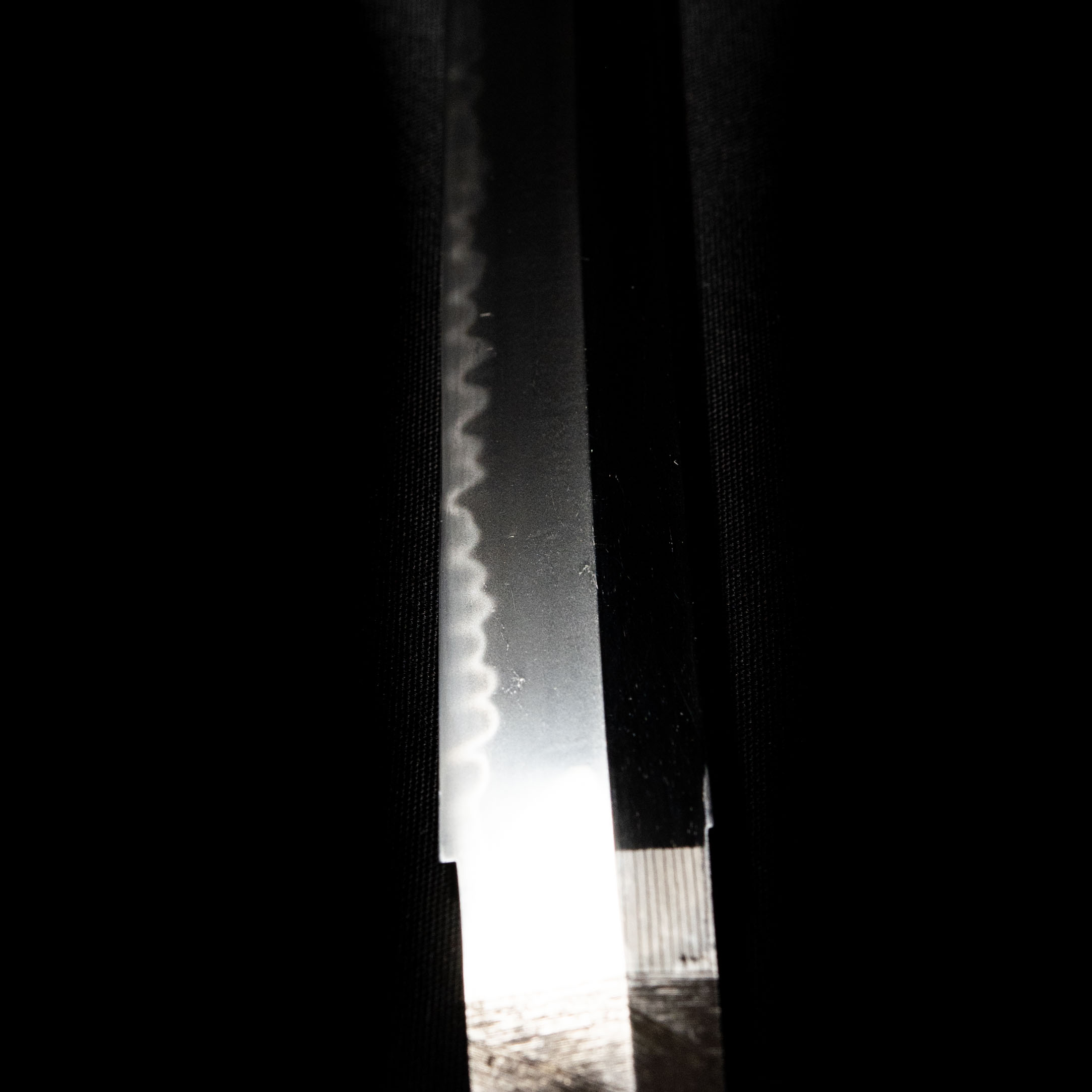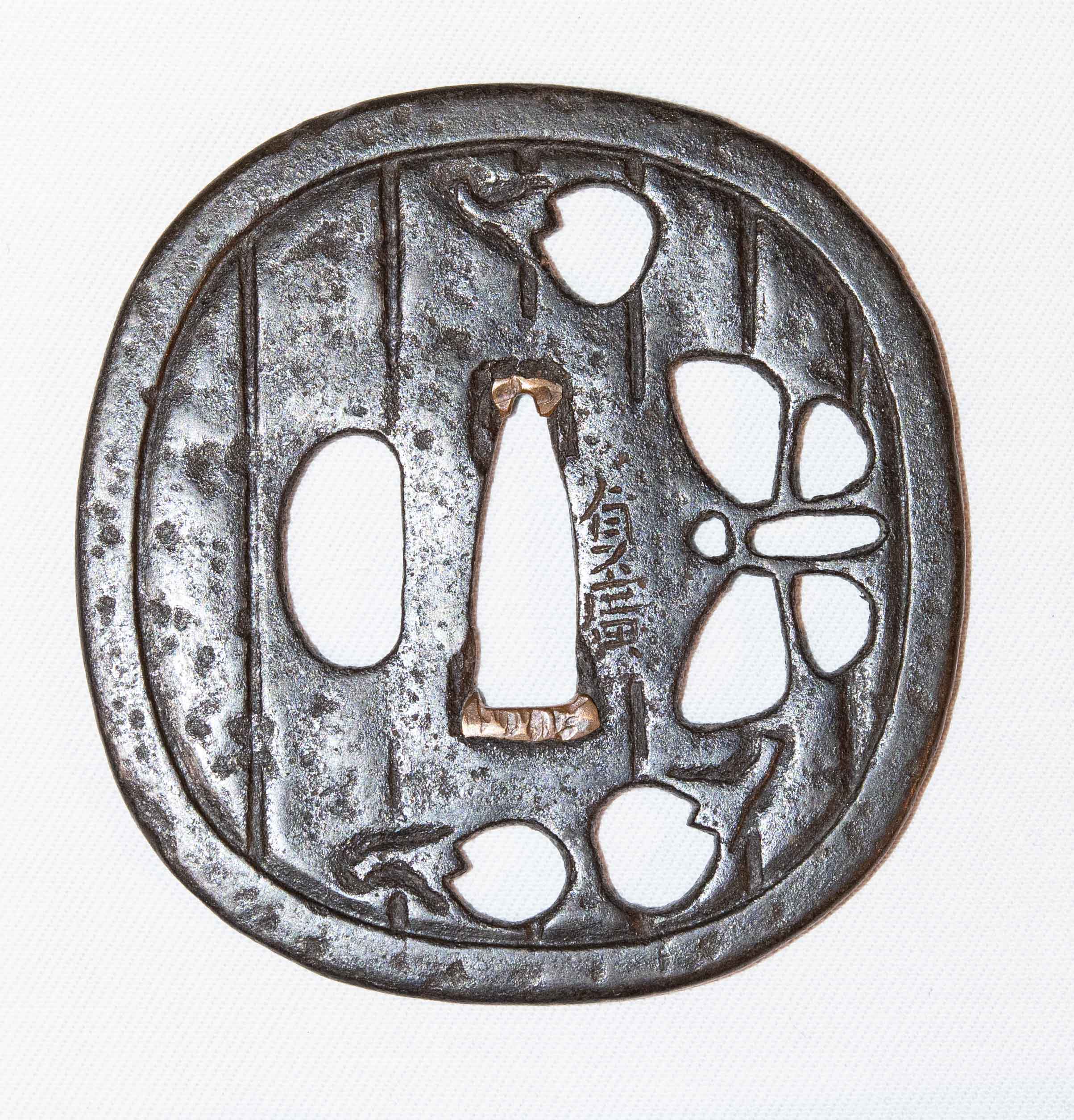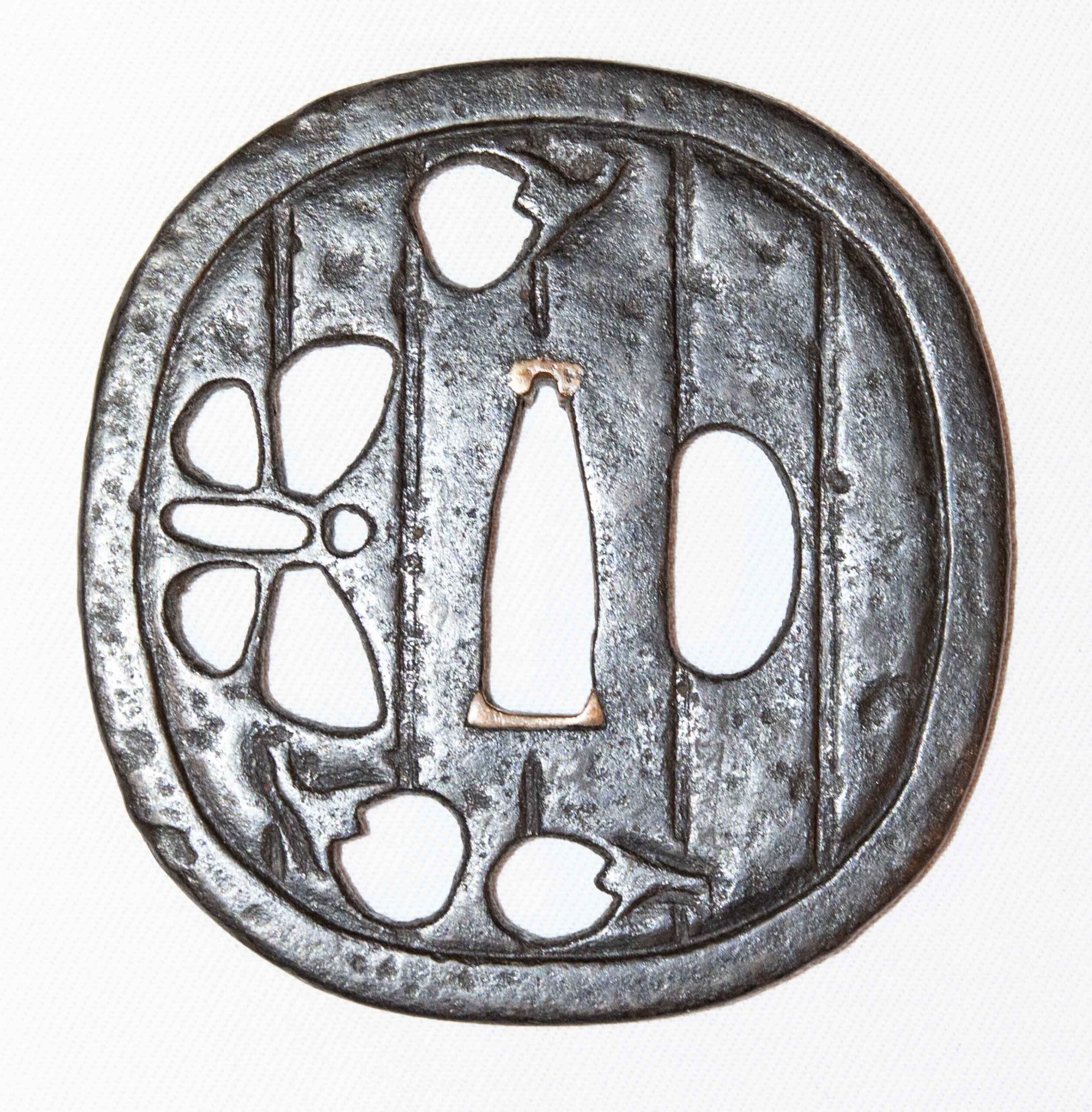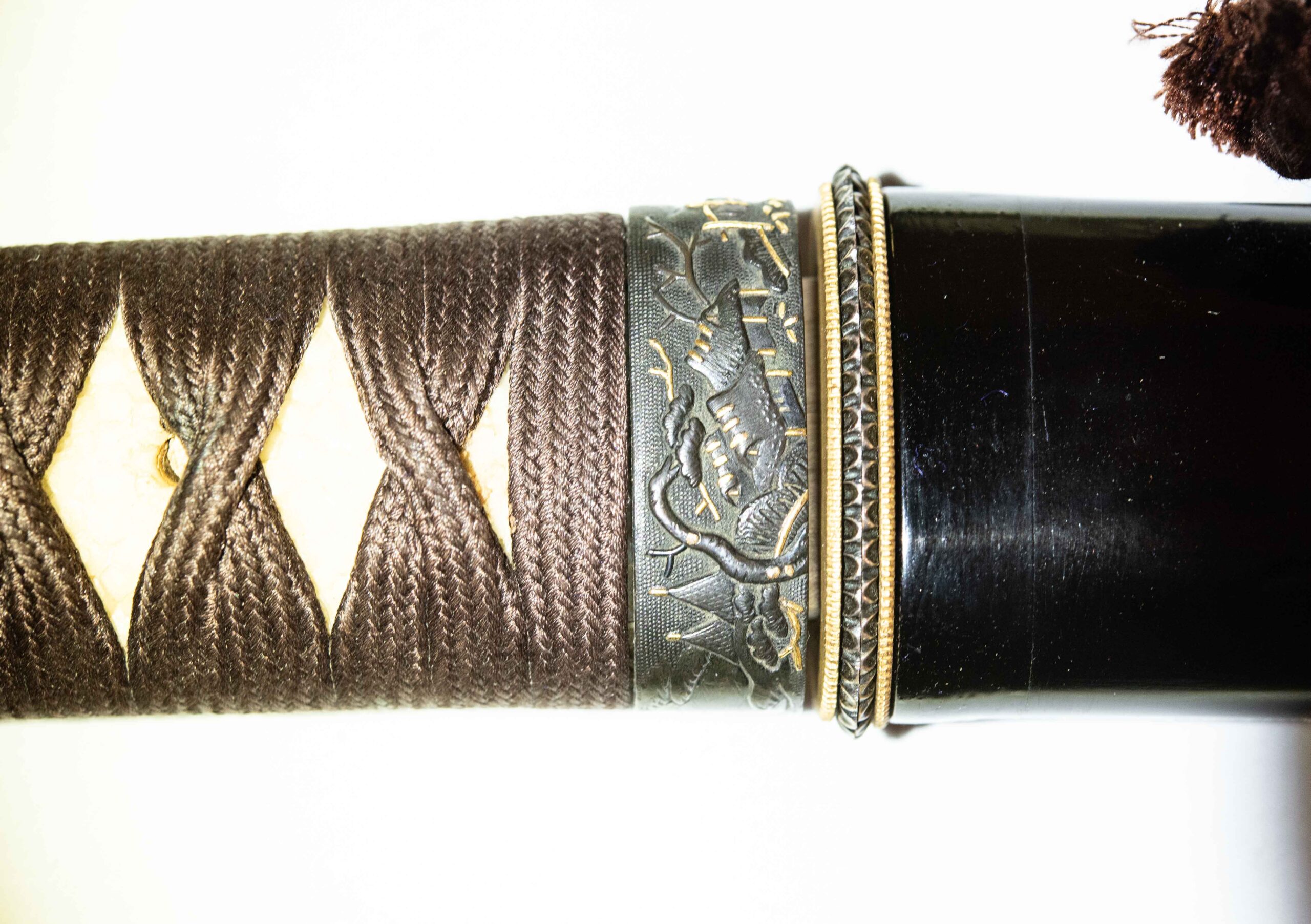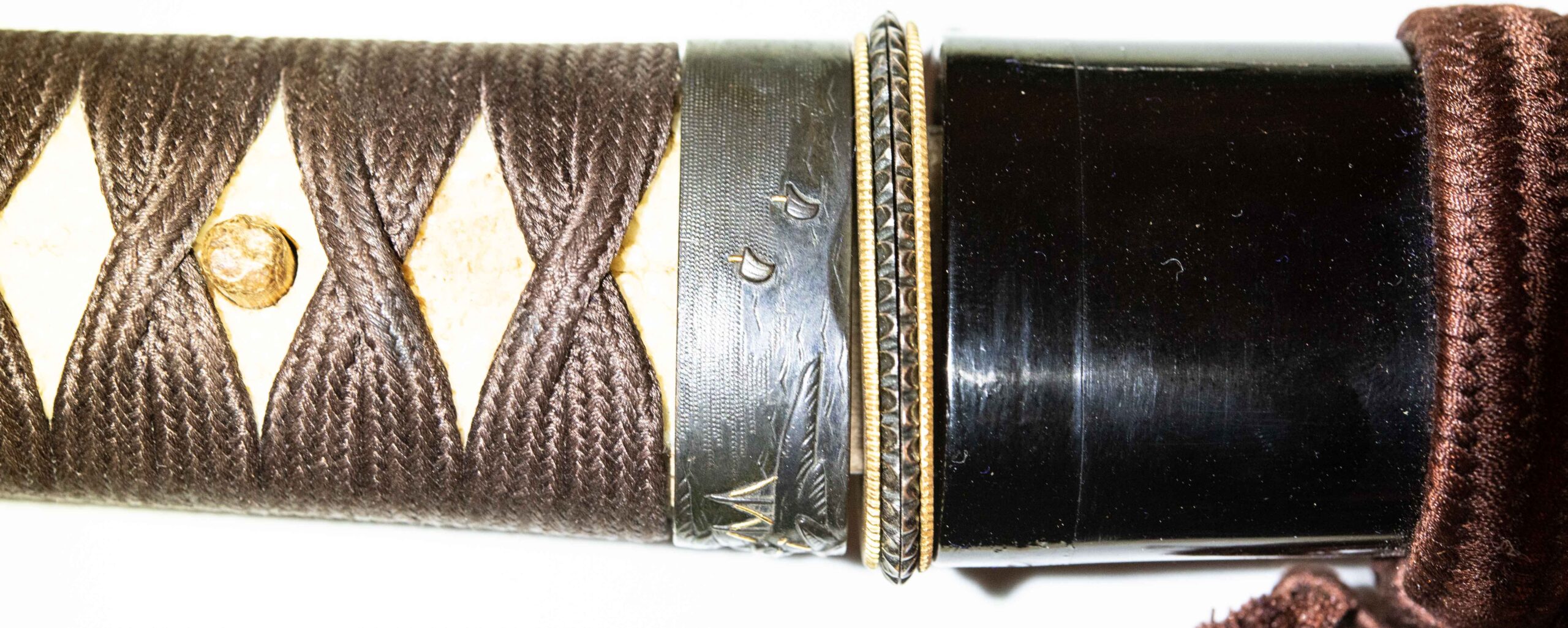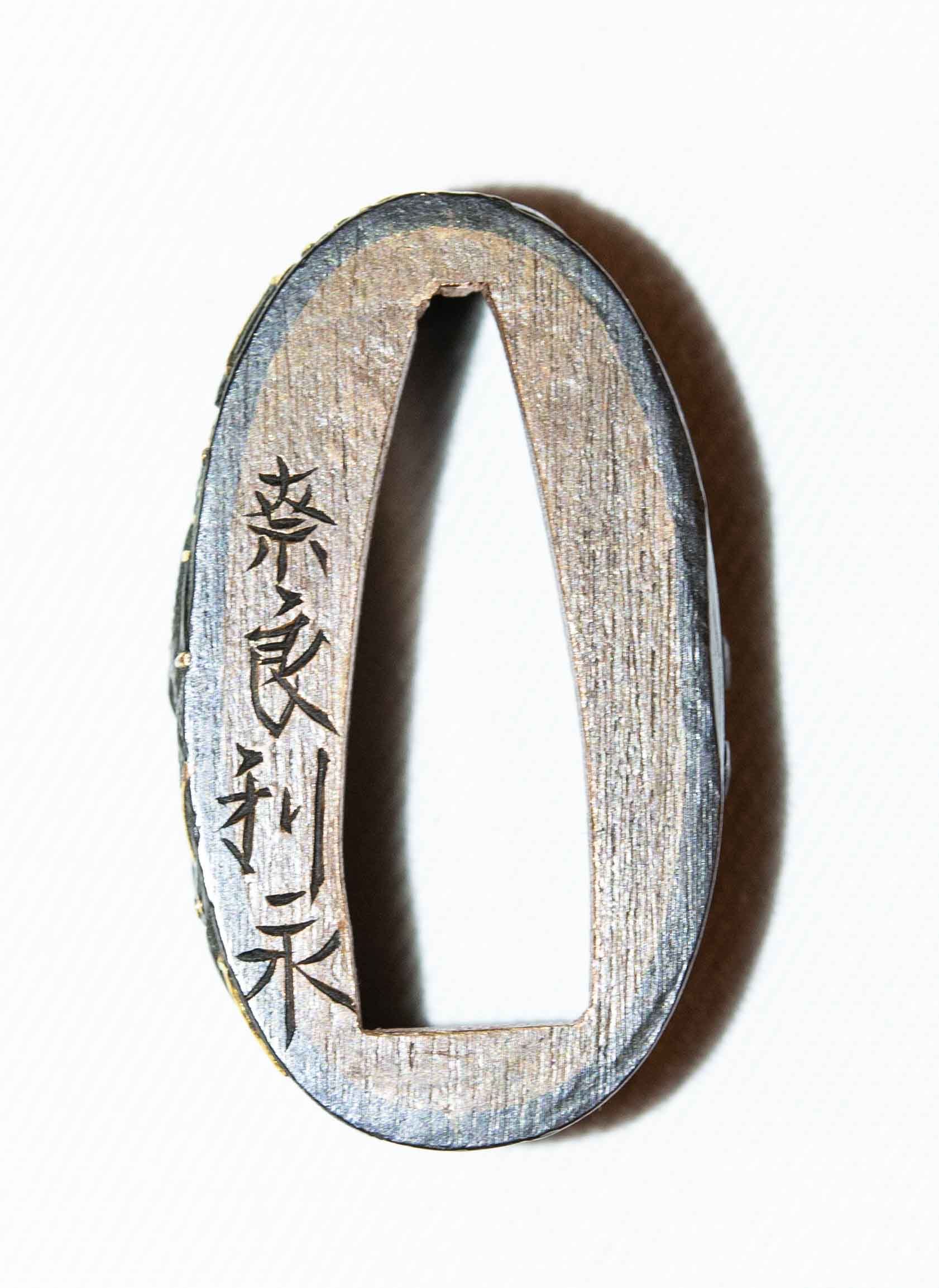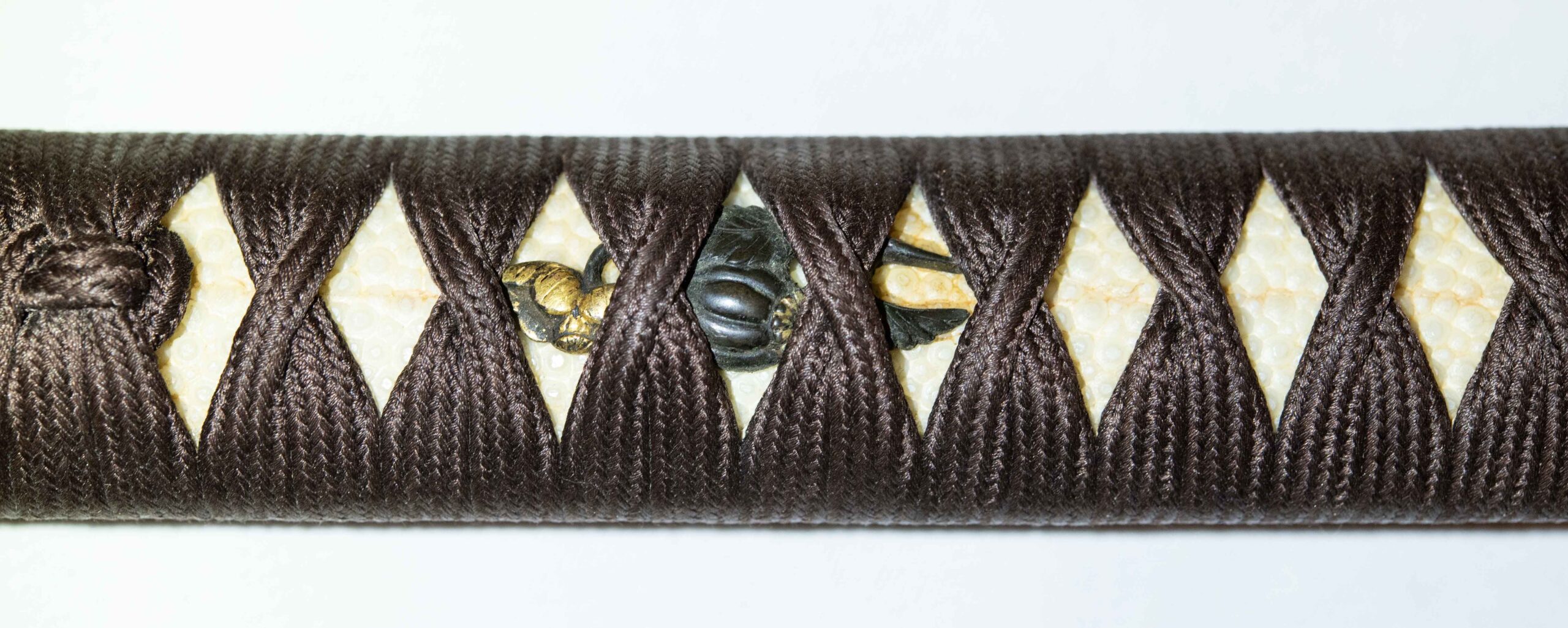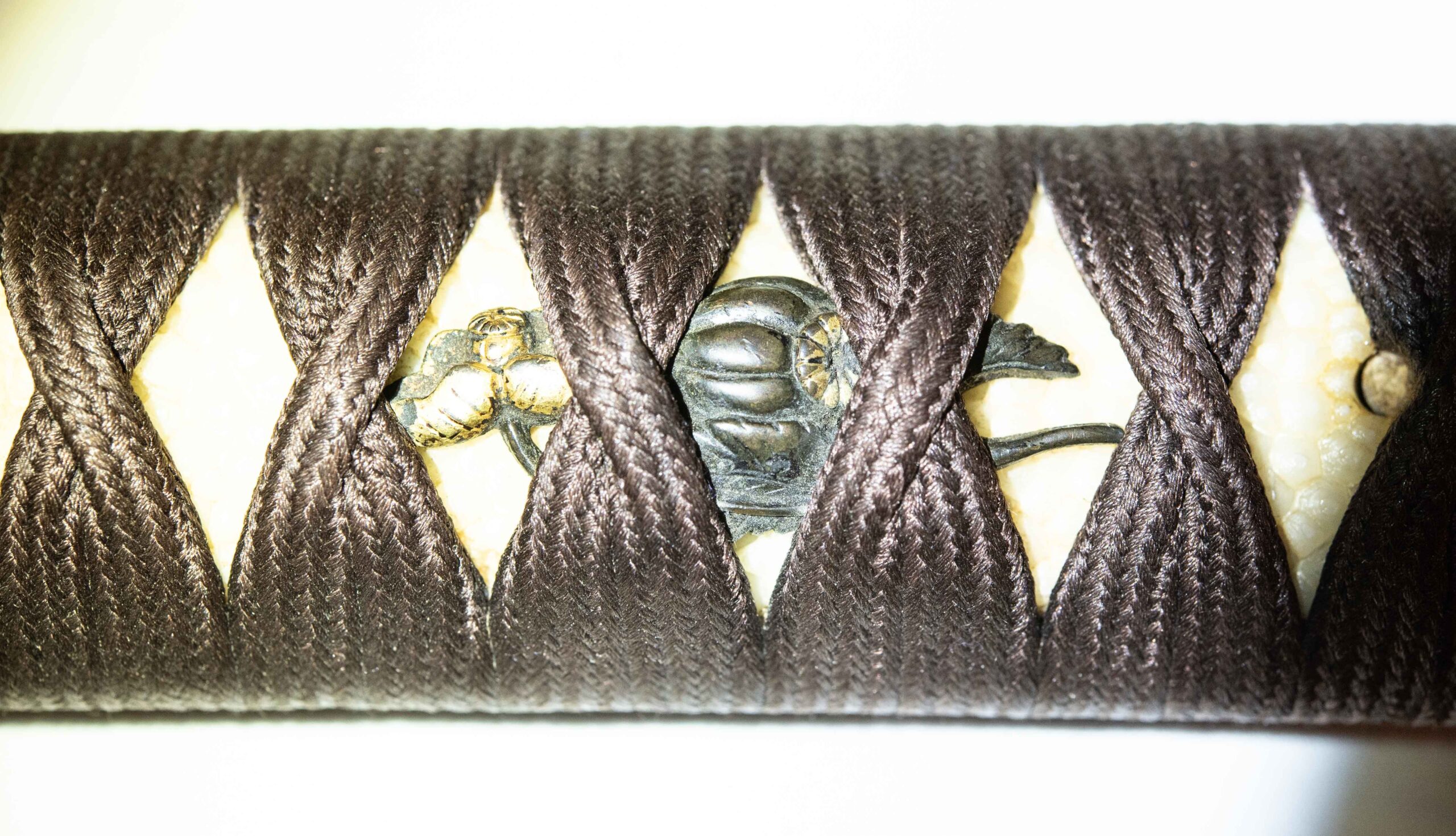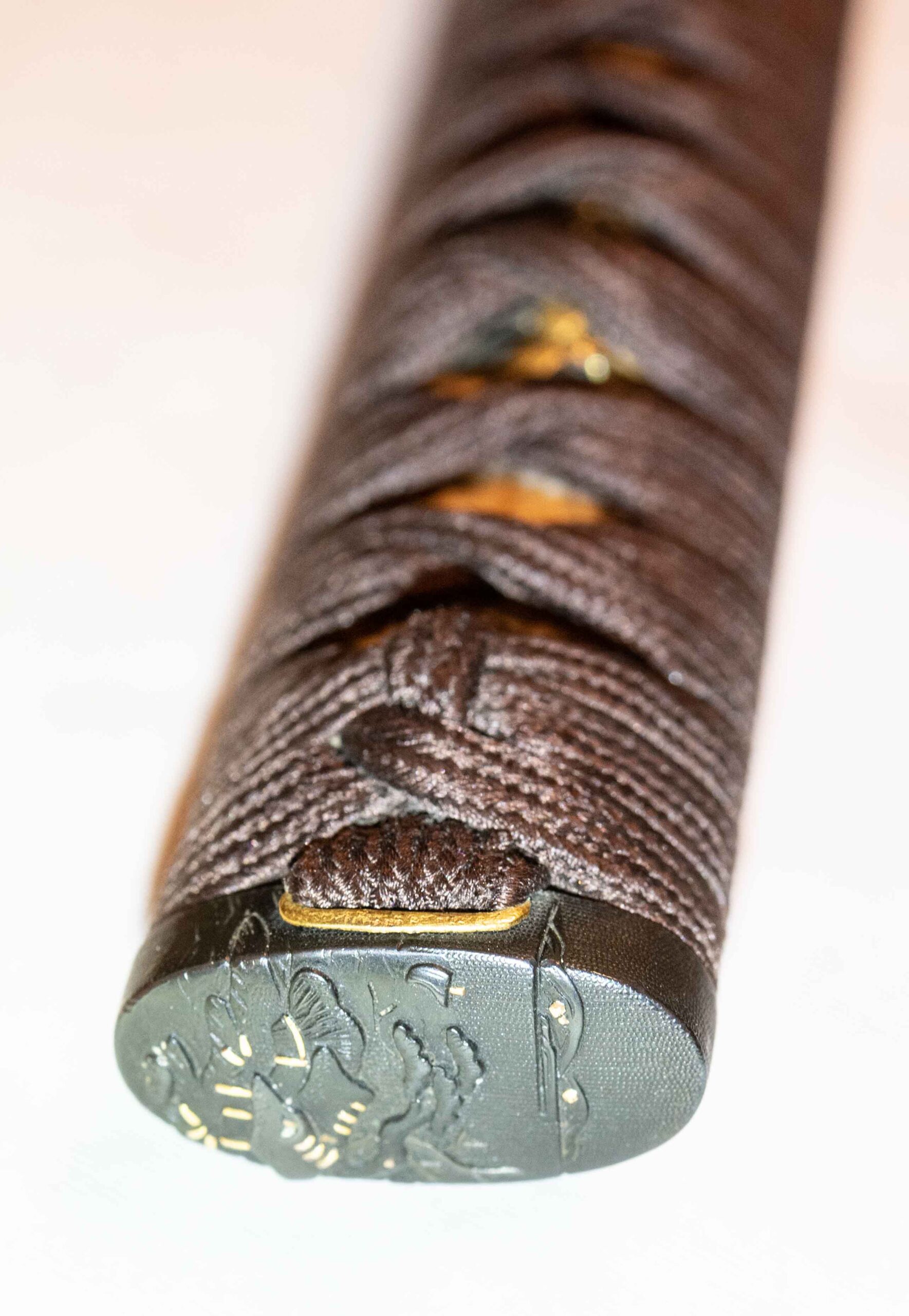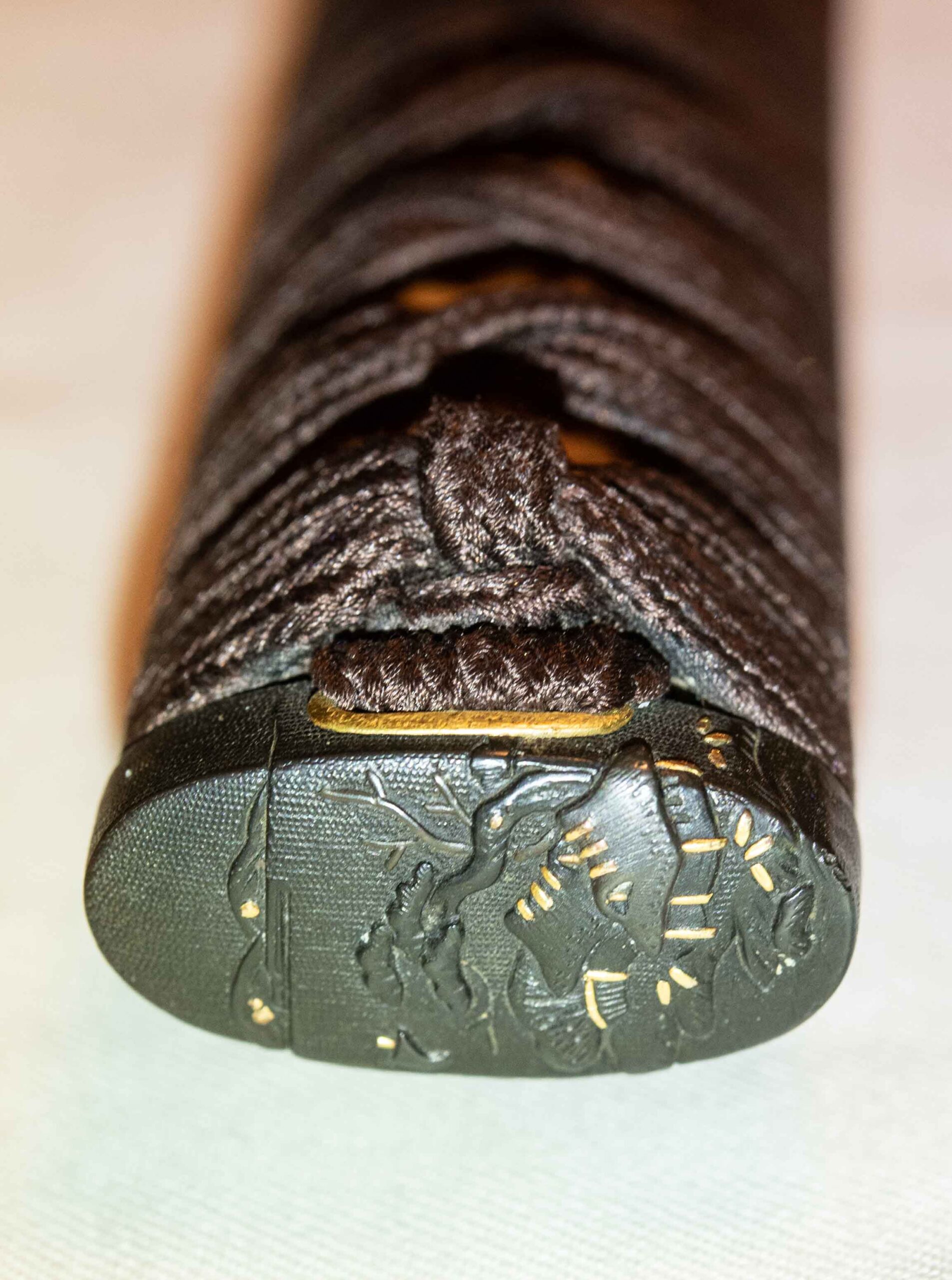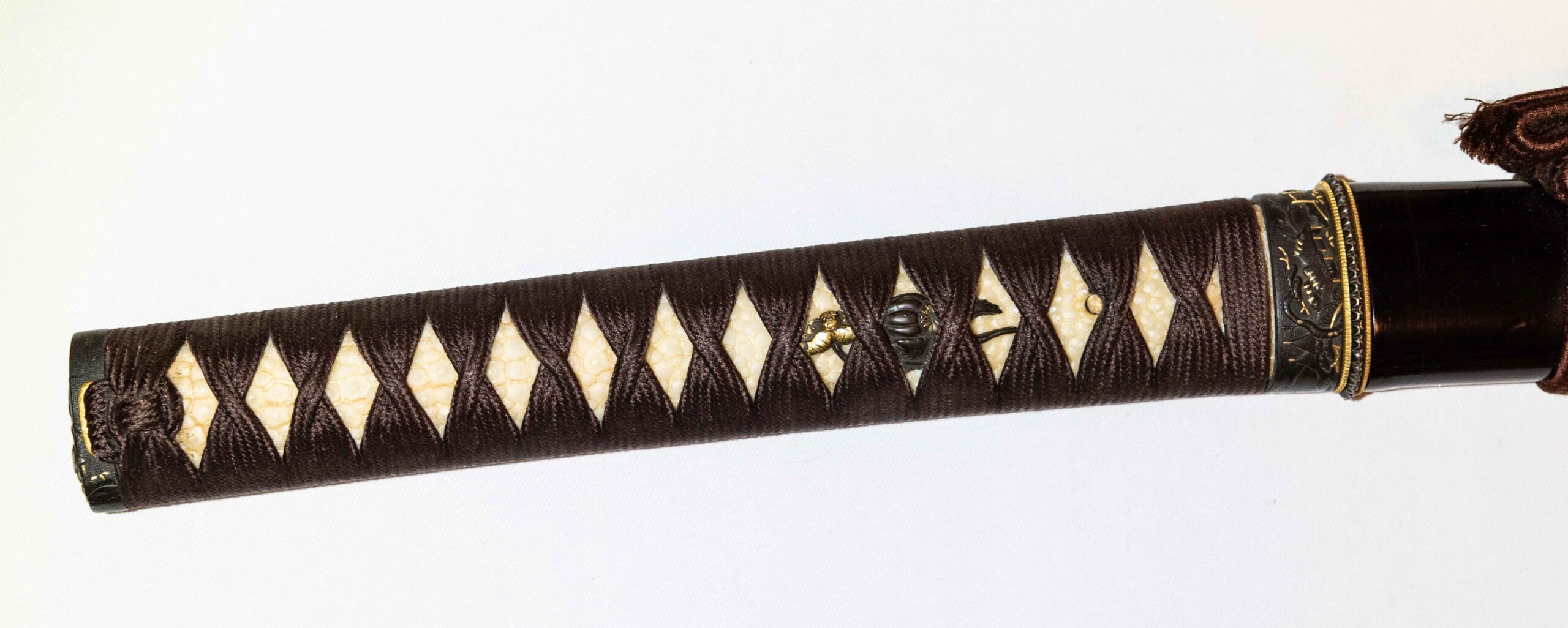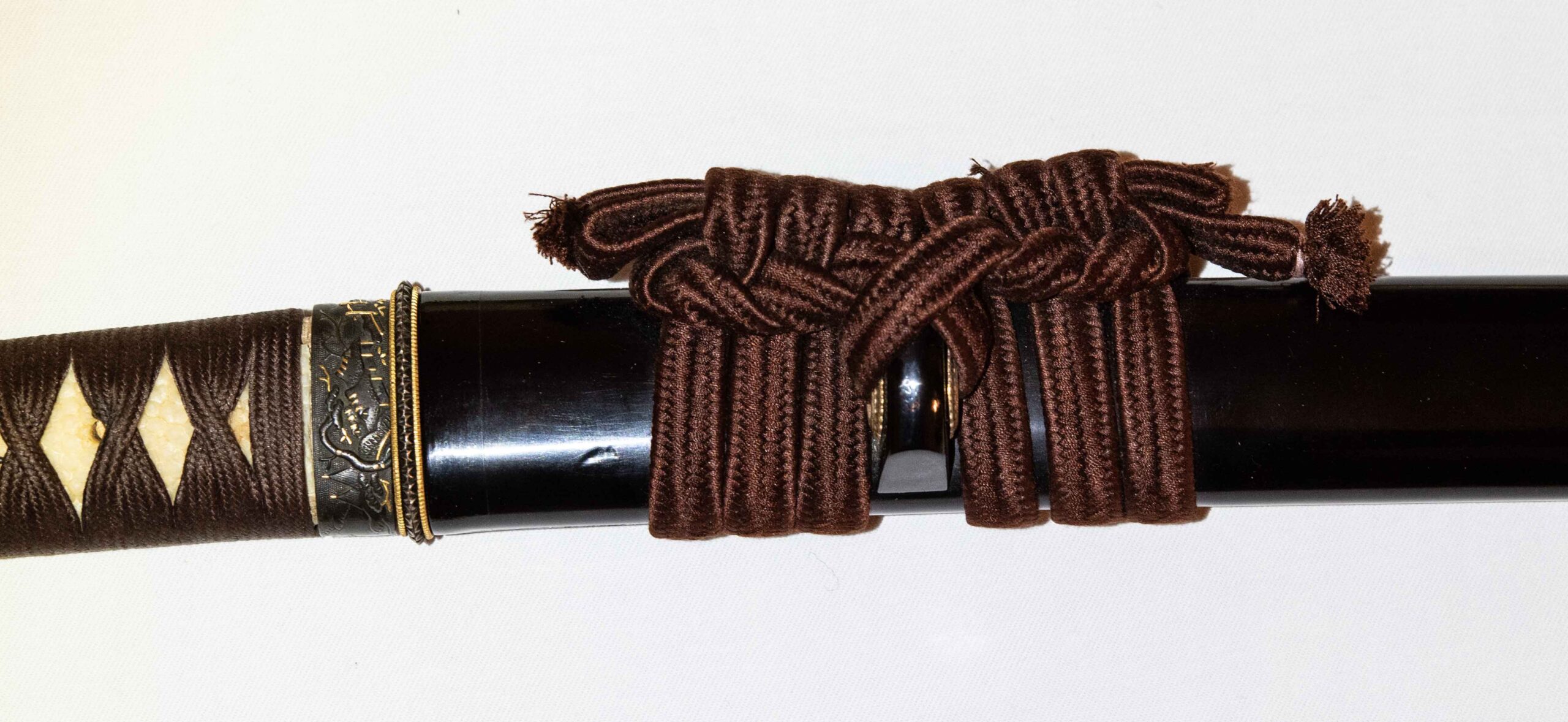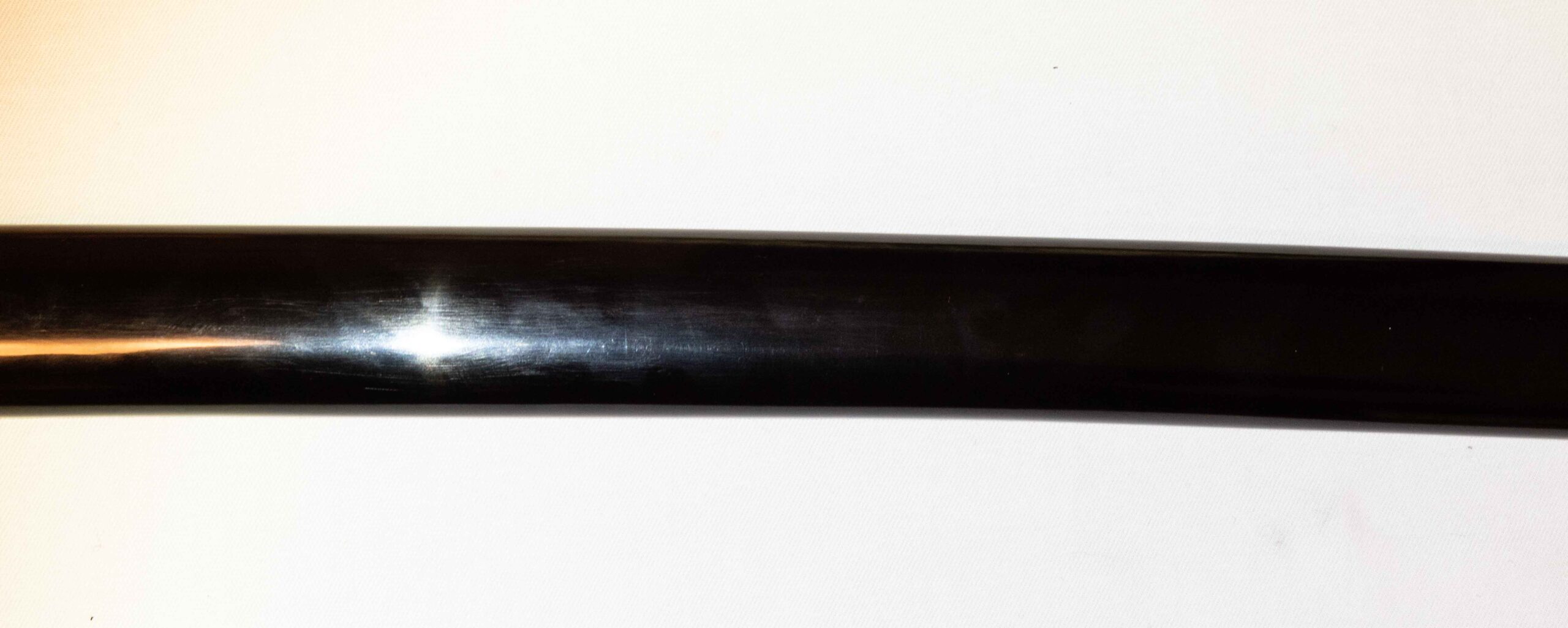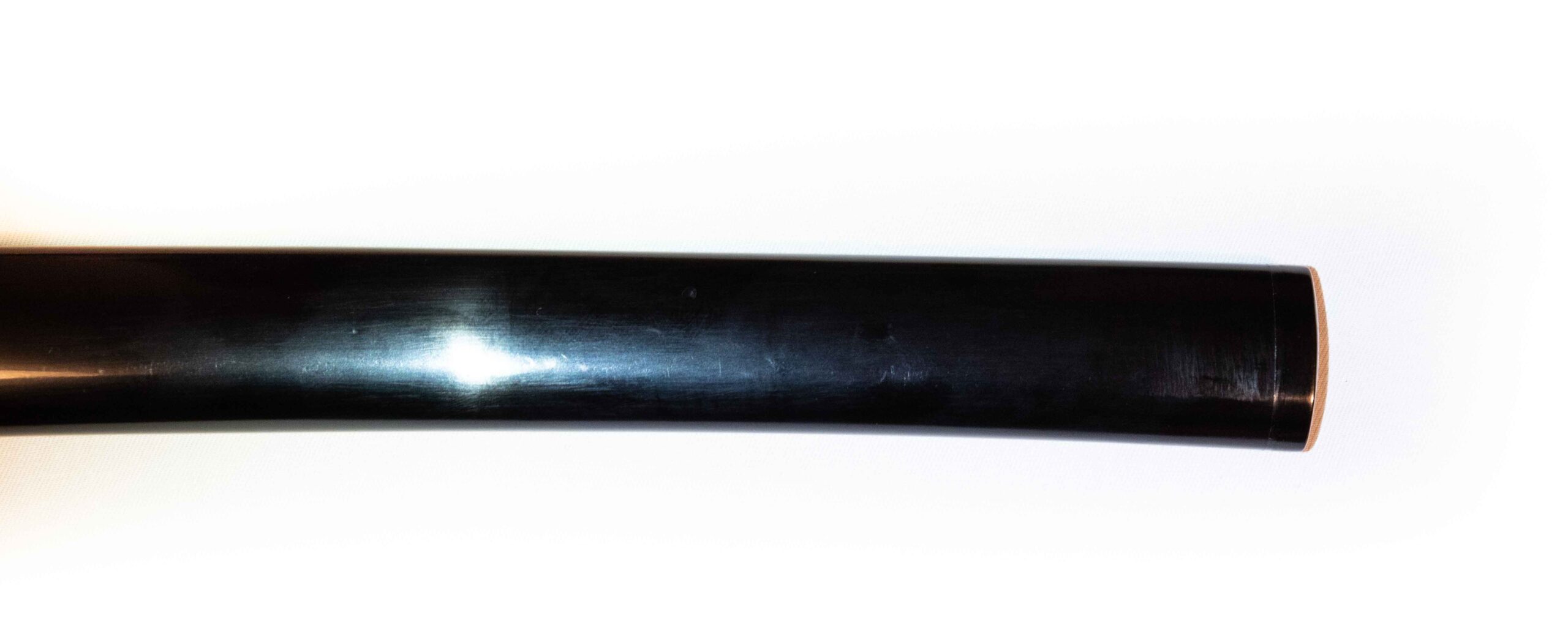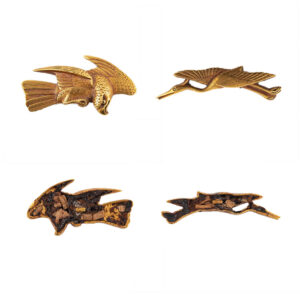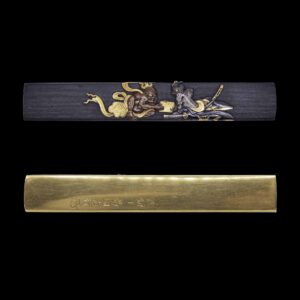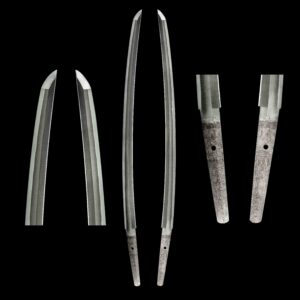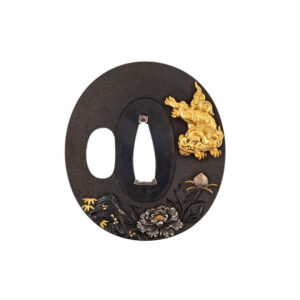A Katana by Tairyusai Sokan (also called Munehiro)
late Edo period (1866)
NBTHK Tokubetsu Hozon certificate from Heisei 29 (30th May 2017)
Signed:
泰龍齋宗寛造之 Tairyuusai Soukan Tsukurukore
慶応二年十月日 Keiou ninen juugatsuhi (October 1866)
Nagasa 長さ 70 cm
Motohaba 元幅 29 mm
Sakihaba 先幅 22 mm
Motokasane 元重ね 7 mm
Sori 反り13 mm
Mitsu-mune
Tairyusai Sokan is one of the best Shin-shinto smiths and has long been popular for his extremely sharp swords together with his master Munetsugu. Born in Shirakawa, Oshu in 1818 as the son of Heizo Ono. In 1848 (the first year of the Kaei era) he was selected as an employee of the Shimousa Furukawa clan. Around 1852 (Kaei 4), he went to Edo by order of the clan and became a disciple of ‘Munetsugu Koyama’. Soukan is declared as Joujou-saku, a superior shin-shinto swordsmith. He passed away in 1883.
See reference: https://nihontoclub.com/smiths/SOK1
The katana is made in an elegant and well balanced Shinogi Tsukuri with a good length of 70 cm. The powerful expression is intensified by the very sound and healthy thickness of 6,8 mm Kasane. The shinogi is even slightly higher by almost 1 mm. The shinogi-ji is wide. The blade shows strong hira niku and is in absolutely healthy and original condition as it can be expected from a blade of this period. The ji is forged in a dense but clear Itame-hada with very fine ji nie. The hamon is done in a Bizen style gunome choji with long ashi that also reach the ha. The single gunome have mainly wide yakigashira but also can appear as groups of double or triple gunome. Negative togari (togari pointing to the ha) are regularly inserted into the gunome waves and their ashi reach down to the sharp edge. The Boshi is midare komi with a pointed ko maru kaeri on the ura side and a maru kaeri with hakikake on the omote.
The clear nioiguchi is done in nioi with ko nie but also ha nie crystals are seen inside the gunome rounds in the boshi and filling the spaces inside the yakigashira. The nie crystals are running through the nioiguchi partly accumulating to strong nie and mura nie thus producing a beautiful contrast with the nioi. Ha nie is also set under the tani of the gunome inside the ha. Also yubashiri like nie are seen here and there above the hamon at the lower parts of the ji.
The Nakago Yasurime are o-sujikai with kesho (kiri above the sujikai which are divided into the nakago ji side and nakago shinogi ji side.
The Shirasaya has a Sayagaki by Tanobe sensei who has inscribed it as following:
‘Tairyusai Sokan
Nanajimei oyobi keio ninen jugatsu nichi ki
Nikuoki yutakade temochi ga omoku
Ganken naru tsukuri komi wo mise
Koitame tsugu hadaai ni awaku mita de utsuri fu tachi
Yakiba ha tokui no choji midare wo shimeshi
Nioi gachi konie tsuki nioiguchi akaruku sae
Boshi mo midare komi komaru ni takumini kaeru nado
Doko no honyo wo haki shitaru yuhin nai’
Tairyusai Sokan
seven character signature made on a day of October in the seventh year of Keio
with strong nikuoki the blade is quite heavy
which shows its overall strength and healthy condition
the jihada is ko-itame and a slight utsuri is visible
the hamon exhibits a special choji midare
the nioiguchi is bright and the nioi is mixed with ko-nie
the boshi is also in midare komi and ends in komaru
it is amoung the masterpieces of this smith
Comes with a black lacquer koshirae. The Fuchi-Kashira in Shakudo with Nanako ground depicting a town with huts in the style of the Nara school. The Fuchi is signed Nara Toshinaga (not the Nara Sansaku Toshinaga), which would point to the third master of the Nara family, however his recorded signatures look different. The iron Tsuba is made in the style of the Higo Jingo school and signed Sadahiro depicting a butterfly and eggplants. The Ko-Kinko Yamagane Menuki with gold iroe show poppy seed capsules and blossoms.

